35 Brilliant Open Floor Plan Design Ideas That Create Amazing Flow
Your open floor plan holds incredible potential, but making it feel cohesive and functional can feel overwhelming.
The key is creating distinct zones while maintaining that beautiful, flowing connection between spaces.
These designer-approved ideas will help you transform your open concept into a perfectly balanced home that works for your lifestyle.
01. Create an Entertainment Zone
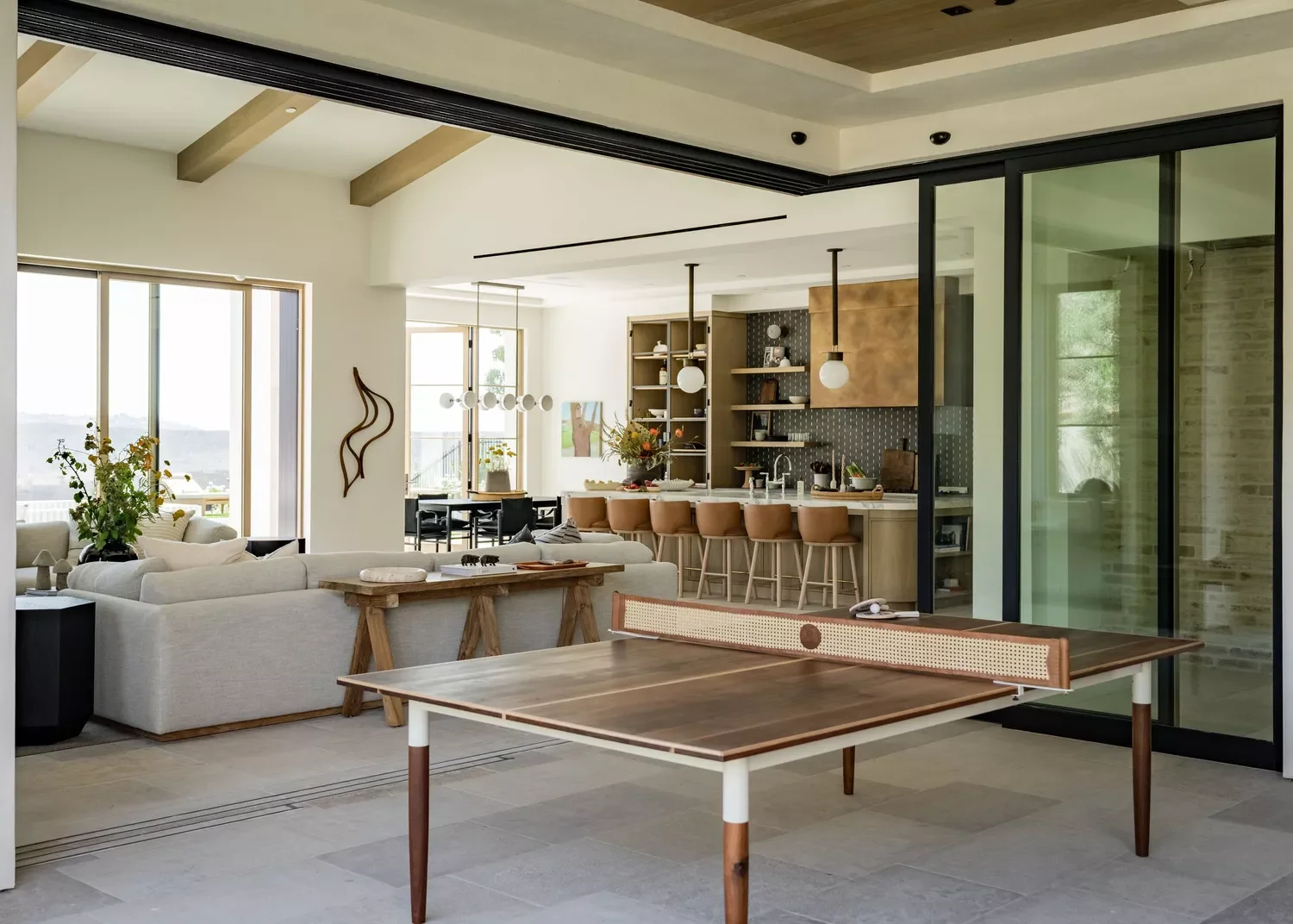
Credit: Brophy Interiors
70K+ People Bought this $29 game-changer Last Month (The Reviews Are Insane)
You can turn your open living space into an entertainment hub by floating a stylish pool or ping pong table right in the center.
Choose a table that complements your existing decor rather than fighting it. This creates a focal point that brings people together while defining the space naturally.
02. Incorporate Flexible Seating Options

Credit: Kate Marker Interiors
Ottomans and poufs are your secret weapons for creating flexible seating that defines your space boundaries.
You can easily move these pieces around when entertaining or rearrange them to create intimate conversation areas. They’re perfect for kids’ movie nights or when you need extra surface space.
03. Connect Zones Through Bold Color
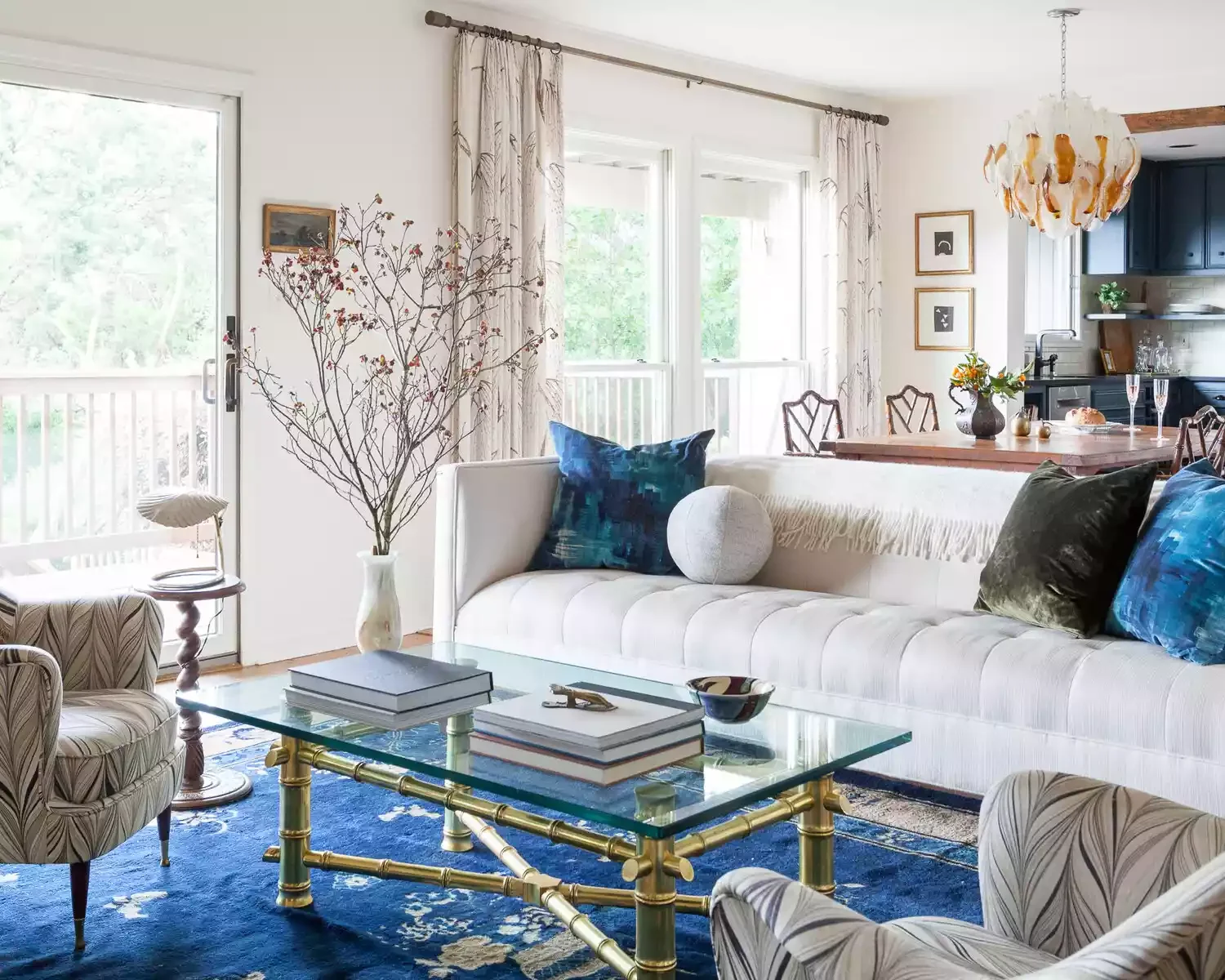
Credit: Erin Williamson Design
You’ll love how a single bold accent color can tie your entire open floor plan together seamlessly.
Try carrying a vibrant blue from your kitchen cabinets into your living room through pillows or artwork. This creates visual continuity that makes the whole space feel intentionally designed.
04. Anchor With a Sectional Sofa
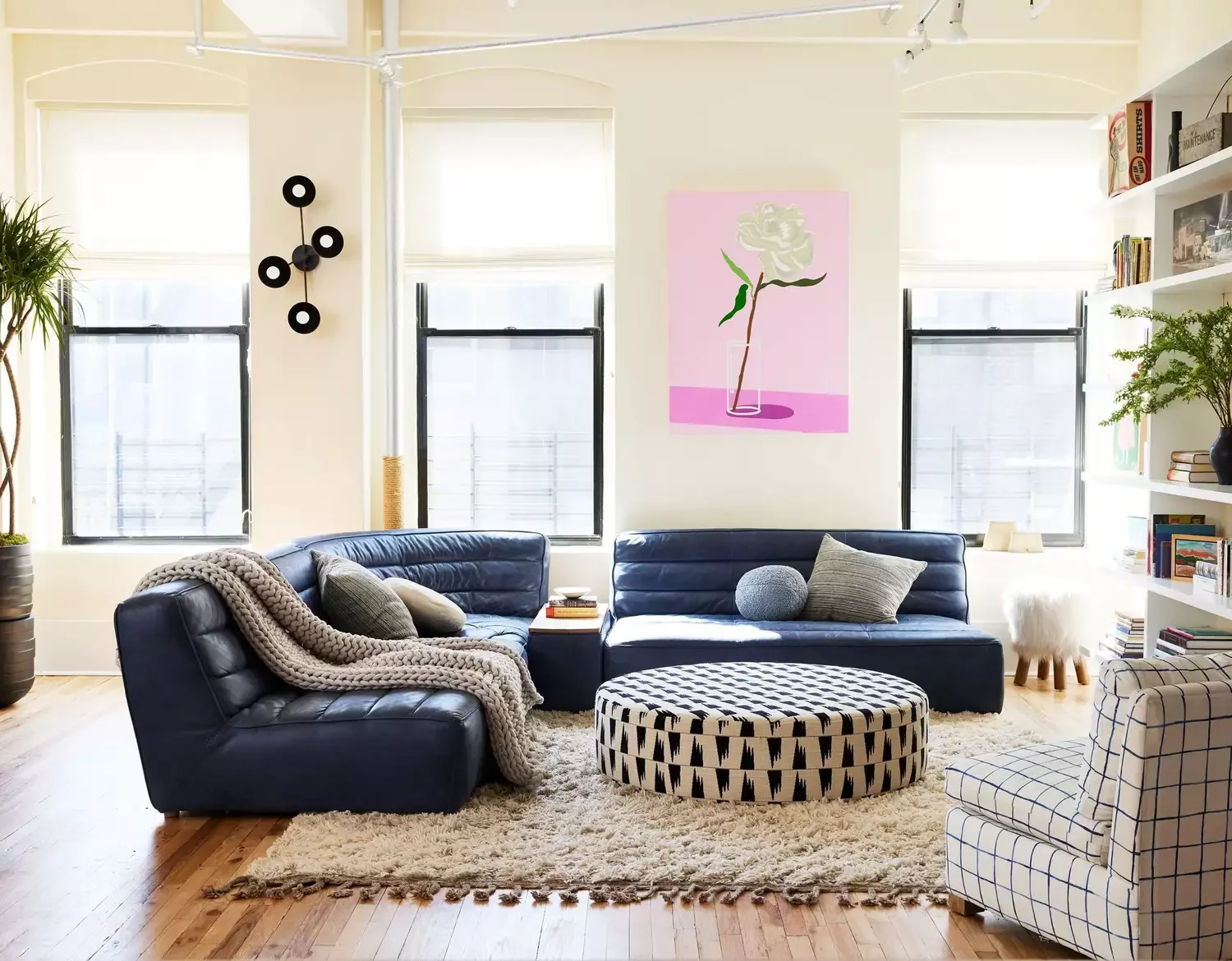
Credit: Alvin Wayne Interiors
A large sectional sofa becomes an instant room divider when you float it away from the walls.
This creates a cozy seating area that feels separate from your kitchen or dining space. Choose modular pieces so you can reconfigure the layout whenever you want a fresh look.
05. Use Console Tables as Dividers
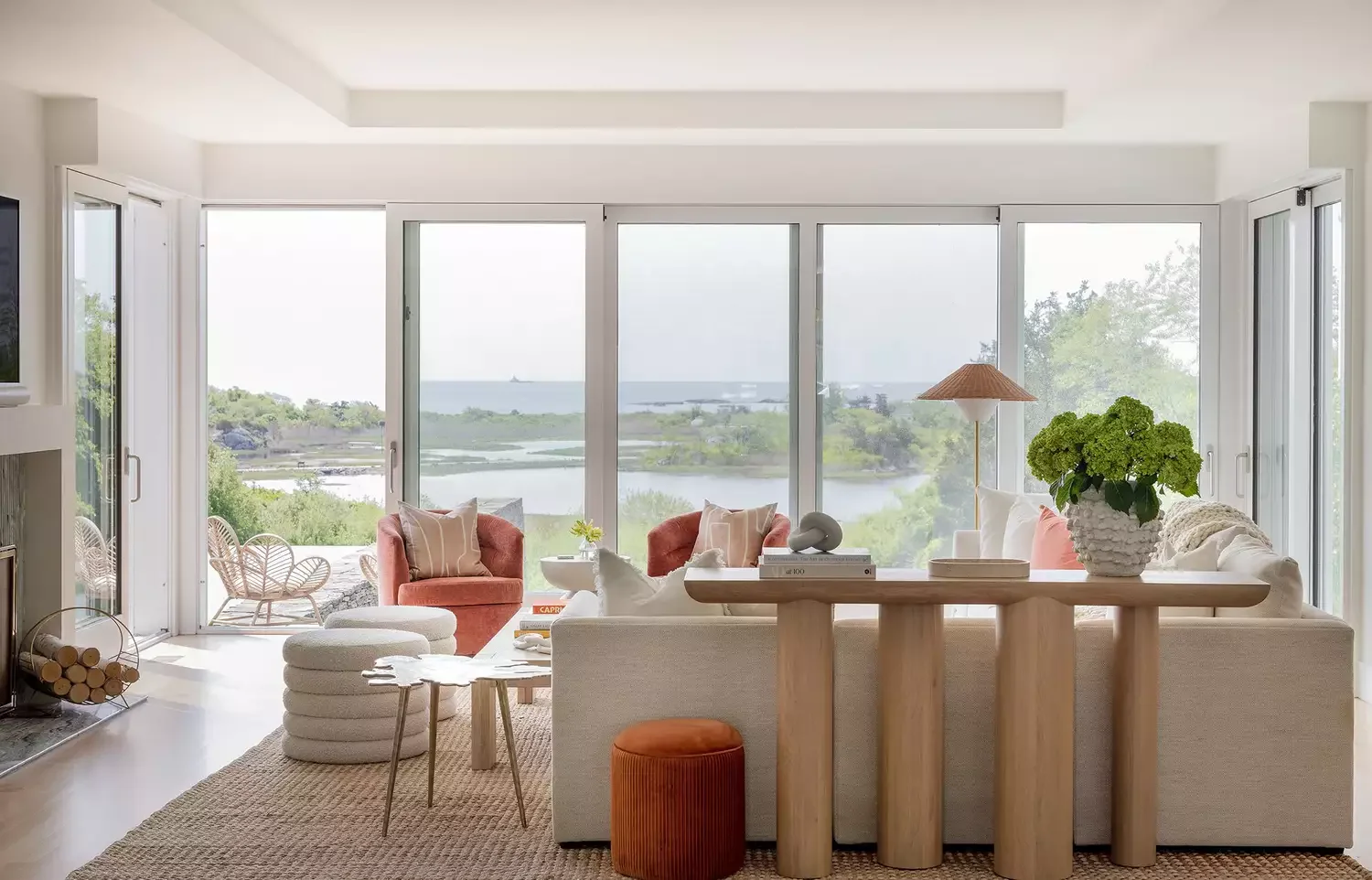
Credit: Desiree Burns Interiors
Placing a console table behind your sofa creates a natural division without blocking sightlines through your space.
Style it with books, plants, or decorative objects to create a beautiful vignette. This also gives you extra storage and display space in your living area.
06. Define Areas With Colorful Seating
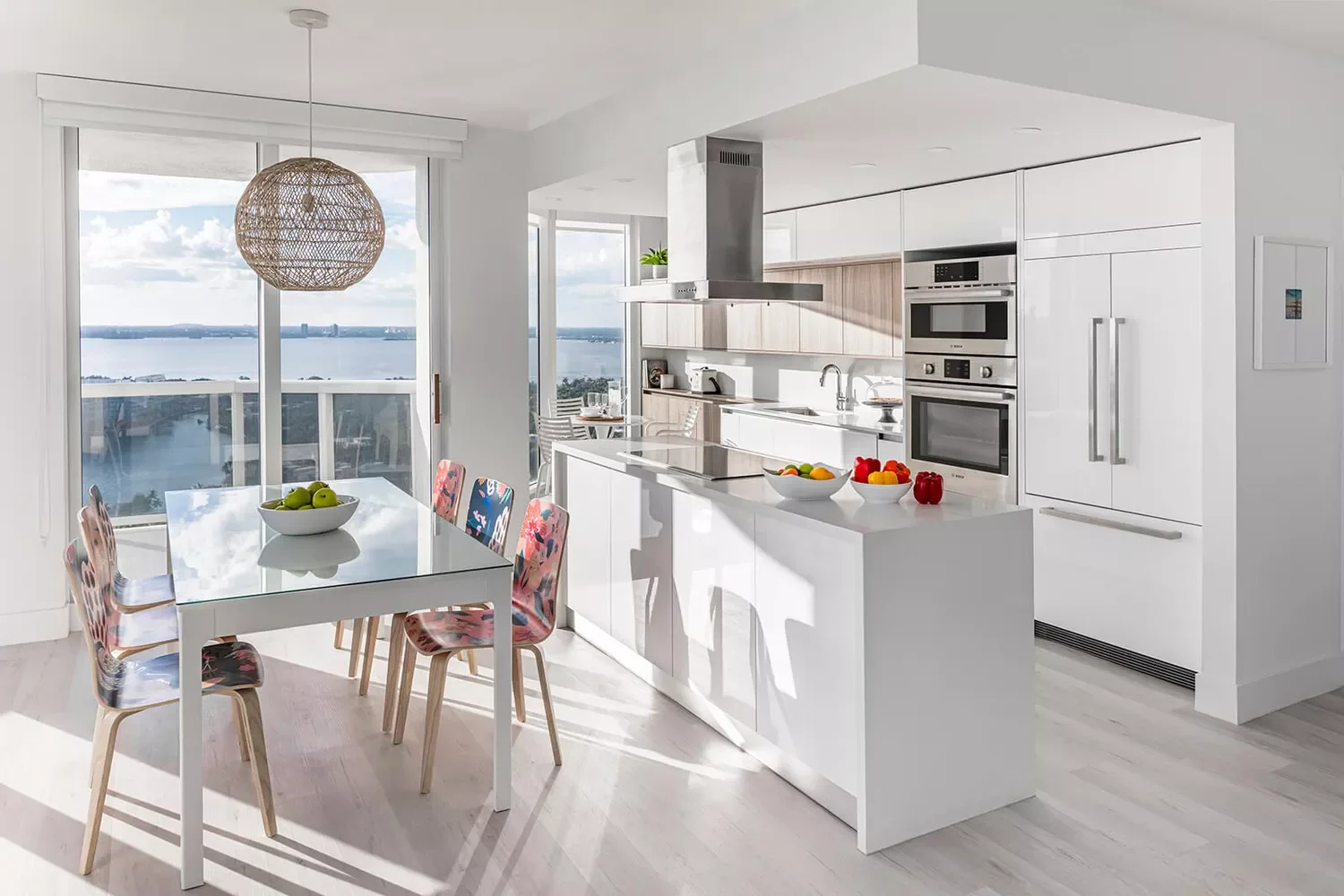
Credit: Maite Granda
Brightly colored dining chairs instantly define your eating area while adding personality to your open kitchen.
Don’t be afraid to mix and match different styles or colors for an eclectic, collected-over-time look. This approach makes your dining zone feel special and separate from cooking areas.
07. Layer Patterns for Visual Interest
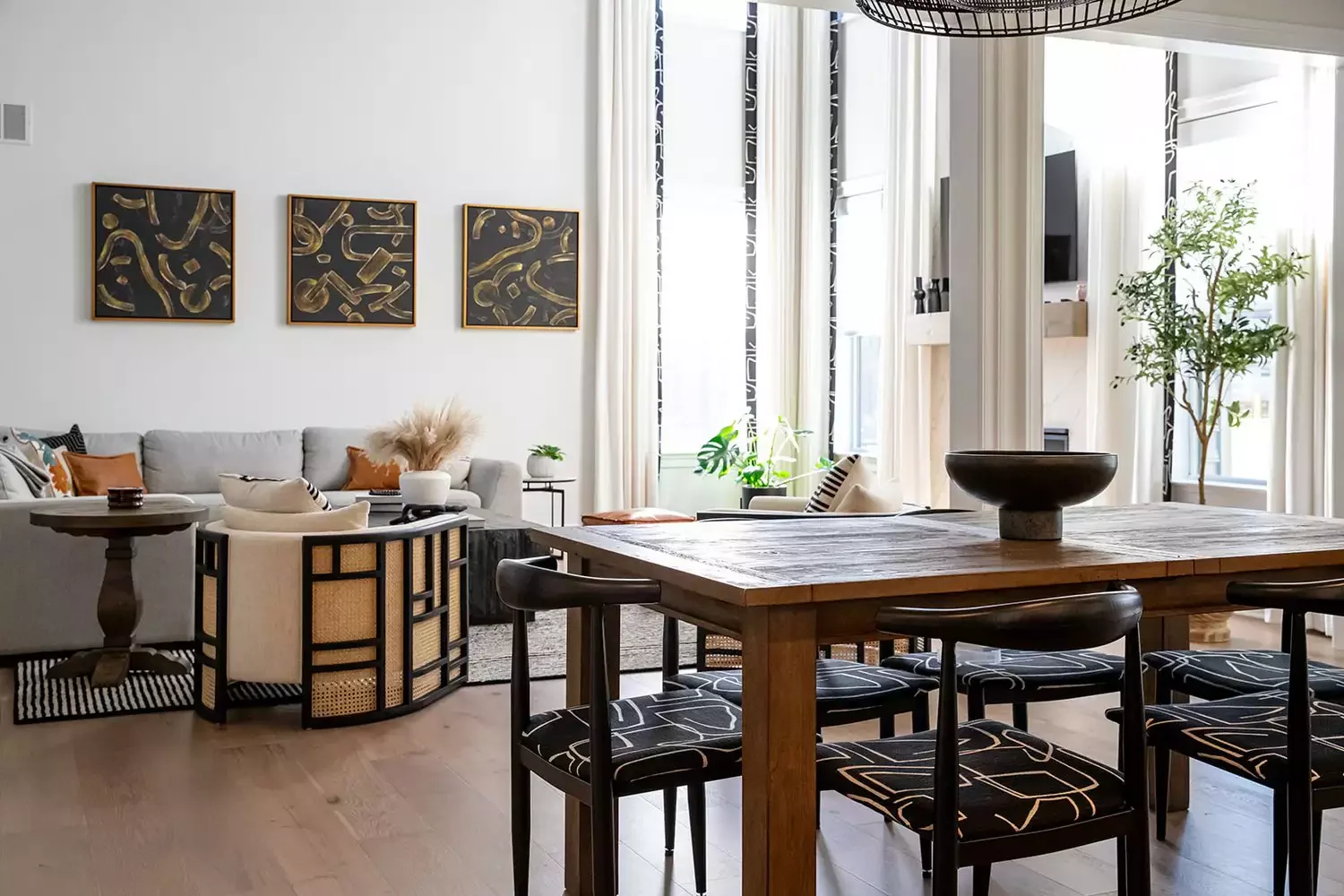
Credit: Gray Space Interiors
You can create rhythm and energy in your open space by mixing patterns thoughtfully throughout the room.
Try combining abstract wall art with striped rugs and geometric throw pillows. The key is keeping your color palette consistent while varying the scale of your patterns.
08. Echo Textures Throughout the Space

Credit: Desiree Burns Interiors
Repeating similar textures and materials throughout your open floor plan creates a cohesive, intentional feeling.
Use plush upholstery on both your dining and living room seating, then add textural rugs in each zone. This approach ties everything together without being too matchy-matchy.
09. Arrange Sofas for Conversation
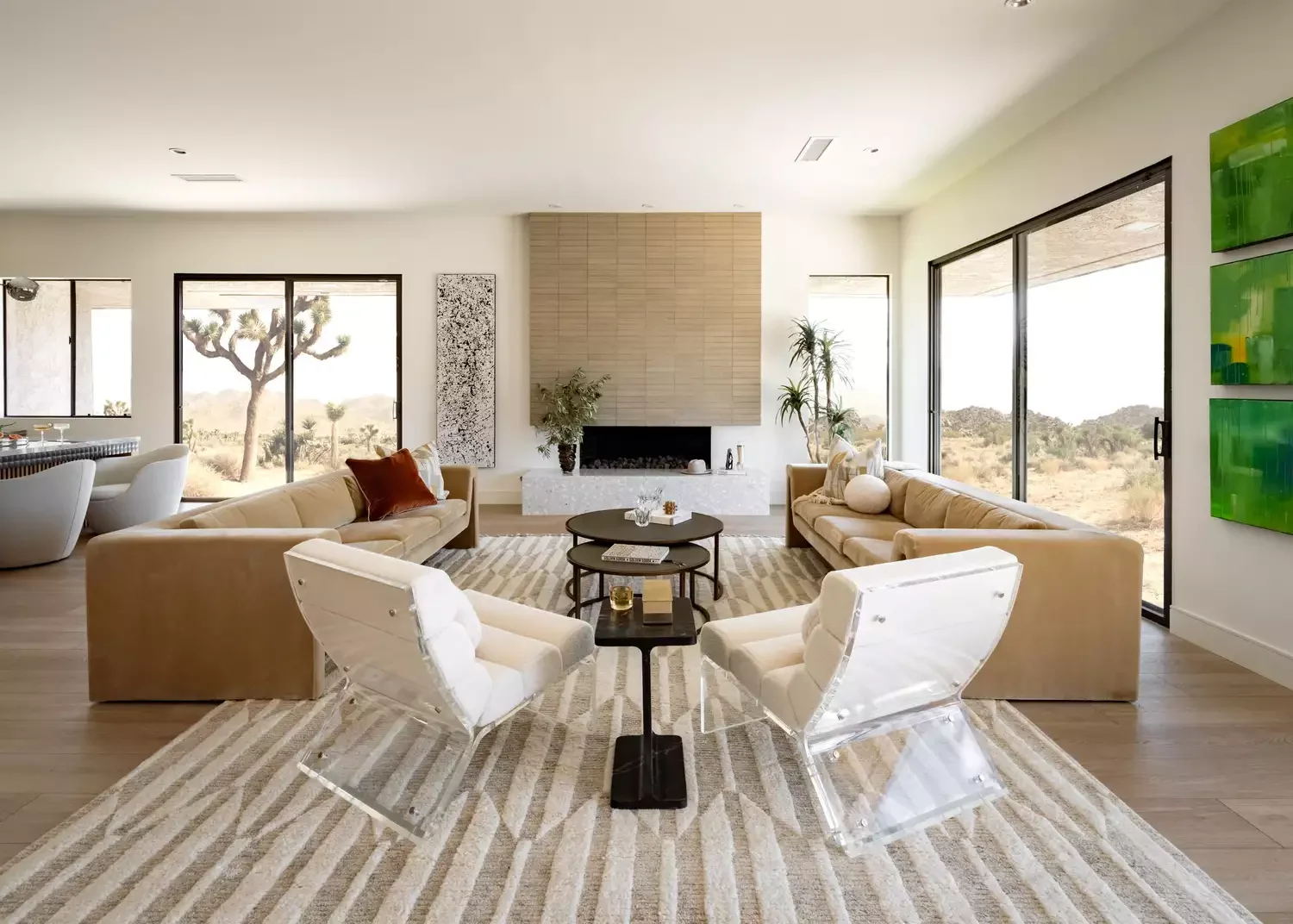
Credit: Brophy Interiors
Create an intimate room-within-a-room by placing two sofas facing each other in your open living space.
Anchor this arrangement with a large area rug and add armchairs at one end. This setup is perfect for gathering around a fireplace or creating a cozy conversation zone.
10. Choose Round Dining Tables
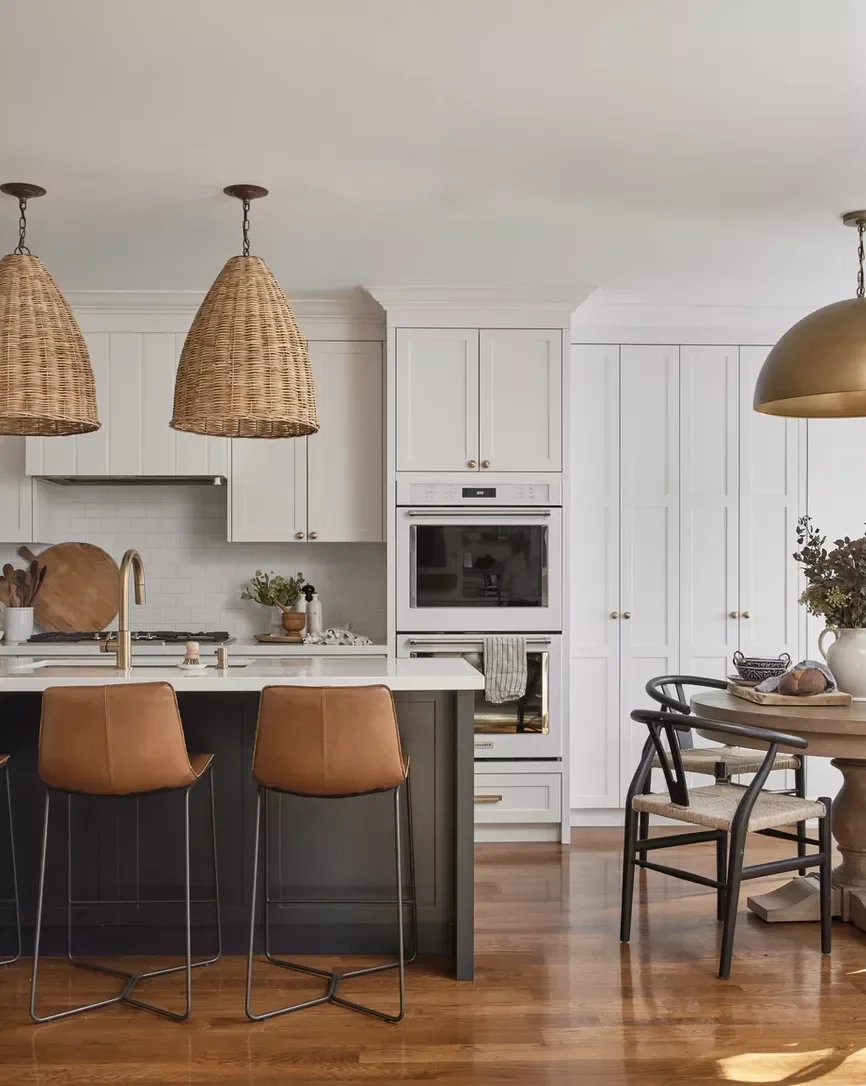
Credit: Ashley Montgomery Design
A round dining table promotes better flow in your open kitchen by eliminating sharp corners that people bump into.
The curved shape also softens all those straight lines from your countertops and cabinetry. Plus, round tables encourage more intimate conversations during meals.
11. Install Cozy Banquette Seating
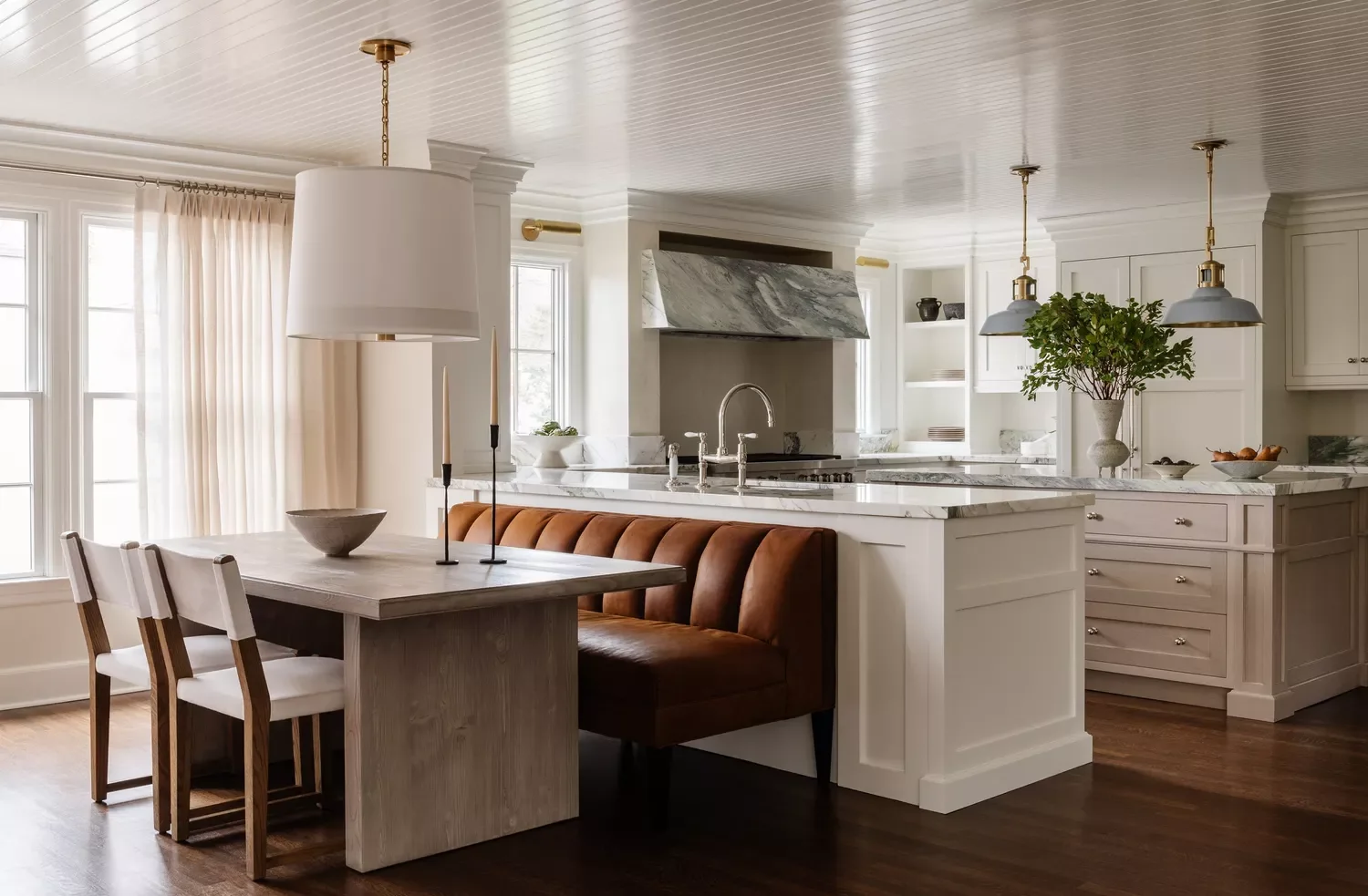
Credit: JK Interior Living
Skip traditional bar stools and create a comfortable dining nook with built-in banquette seating along your kitchen peninsula.
This cozy solution feels more intimate than counter seating while providing extra storage underneath. It also defines your eating area within the larger open space.
12. Keep Entertainment Areas Connected
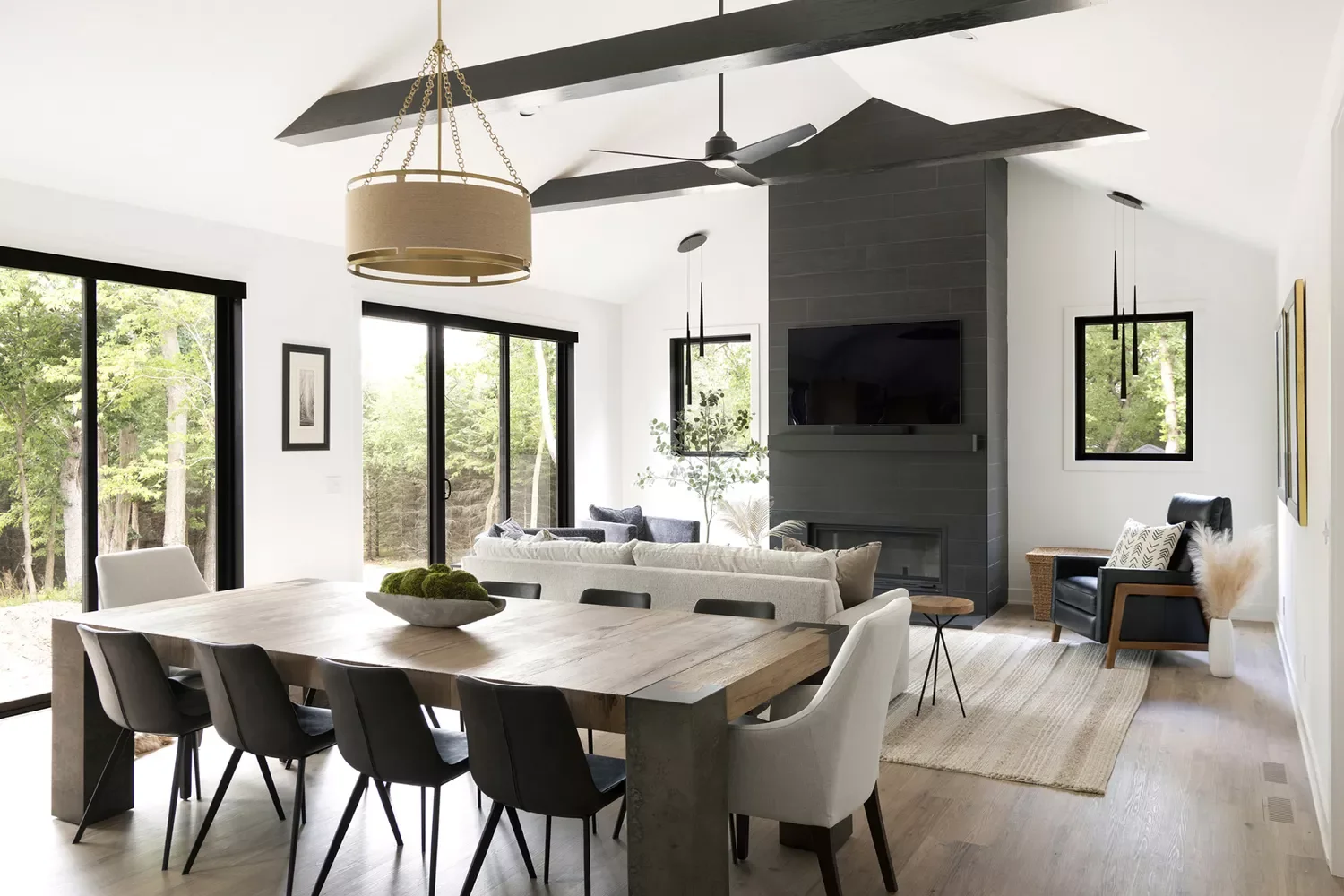
Credit: Amy Leferink at Interior Impressions
You’ll create seamless entertaining flow by keeping your living and dining areas adjacent to each other.
This arrangement lets you move easily between spaces when hosting dinner parties or family gatherings. Your guests can mingle naturally without feeling confined to one area.
13. Create an Entry Landing Zone
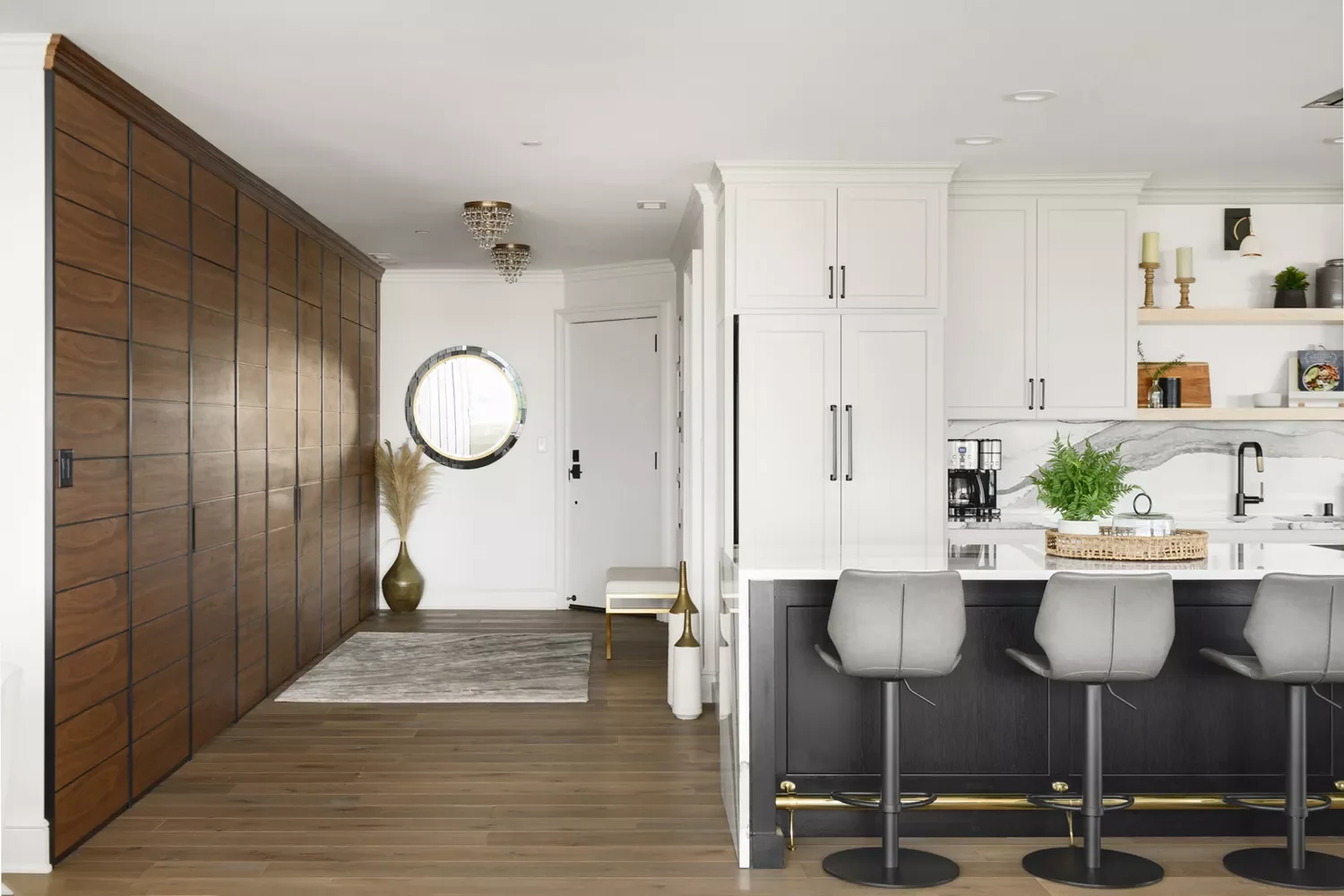
Credit: Interior Impressions
Since open floor plans often lack formal entryways, you can create one with strategic furniture placement.
Use an area rug, mirror, and small bench to define a landing zone near your front door. This gives guests a clear place to pause and orient themselves.
14. Make a Statement With Large Mirrors
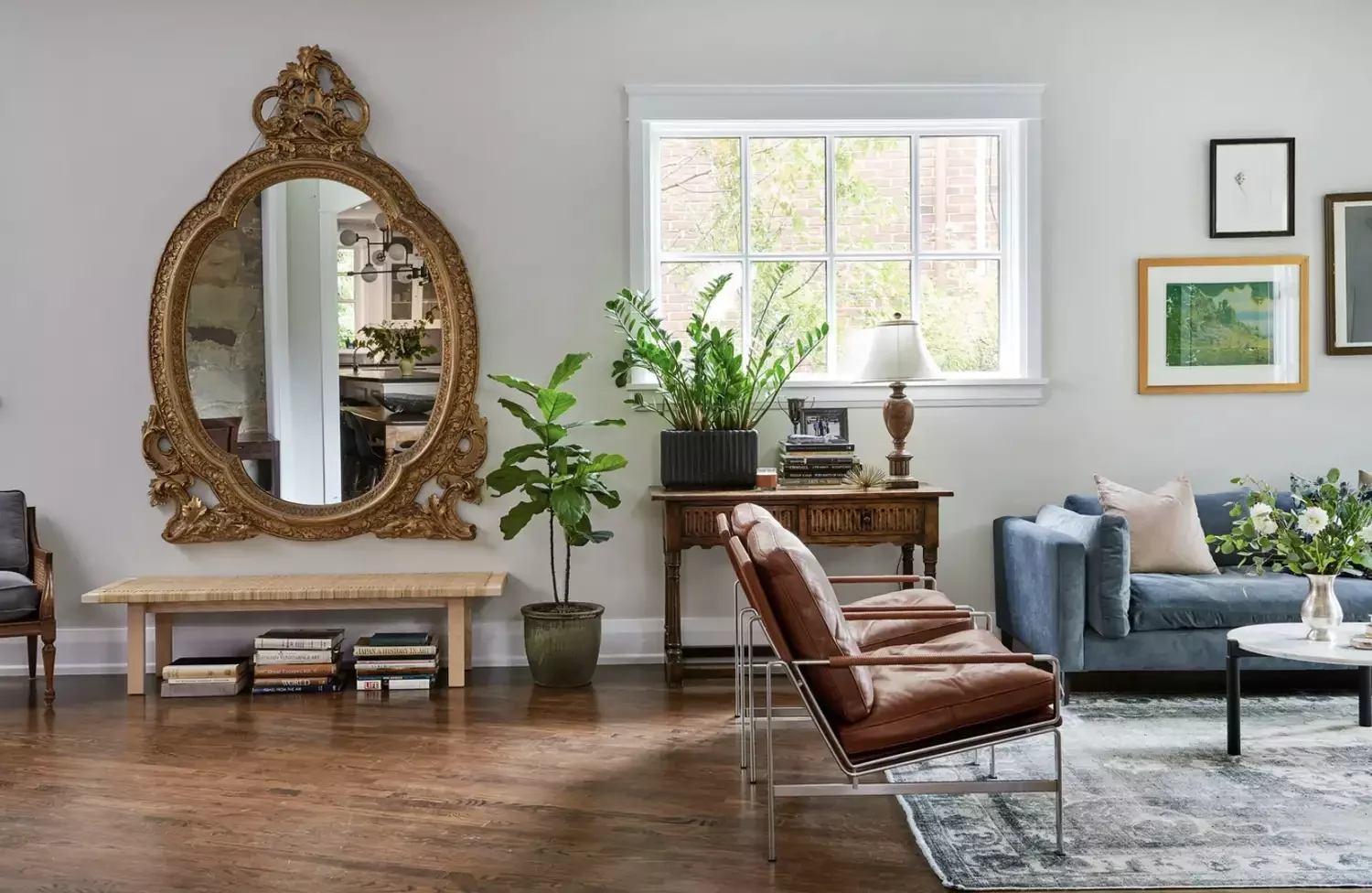
Credit: Ashley Montgomery Design
A large decorative mirror can anchor a small seating area or entryway within your larger open living space.
Choose a modern style for contemporary homes or go vintage with an ornate gilded frame for character. Mirrors also reflect light and make your space feel larger.
15. Contrast Light and Dark Tones
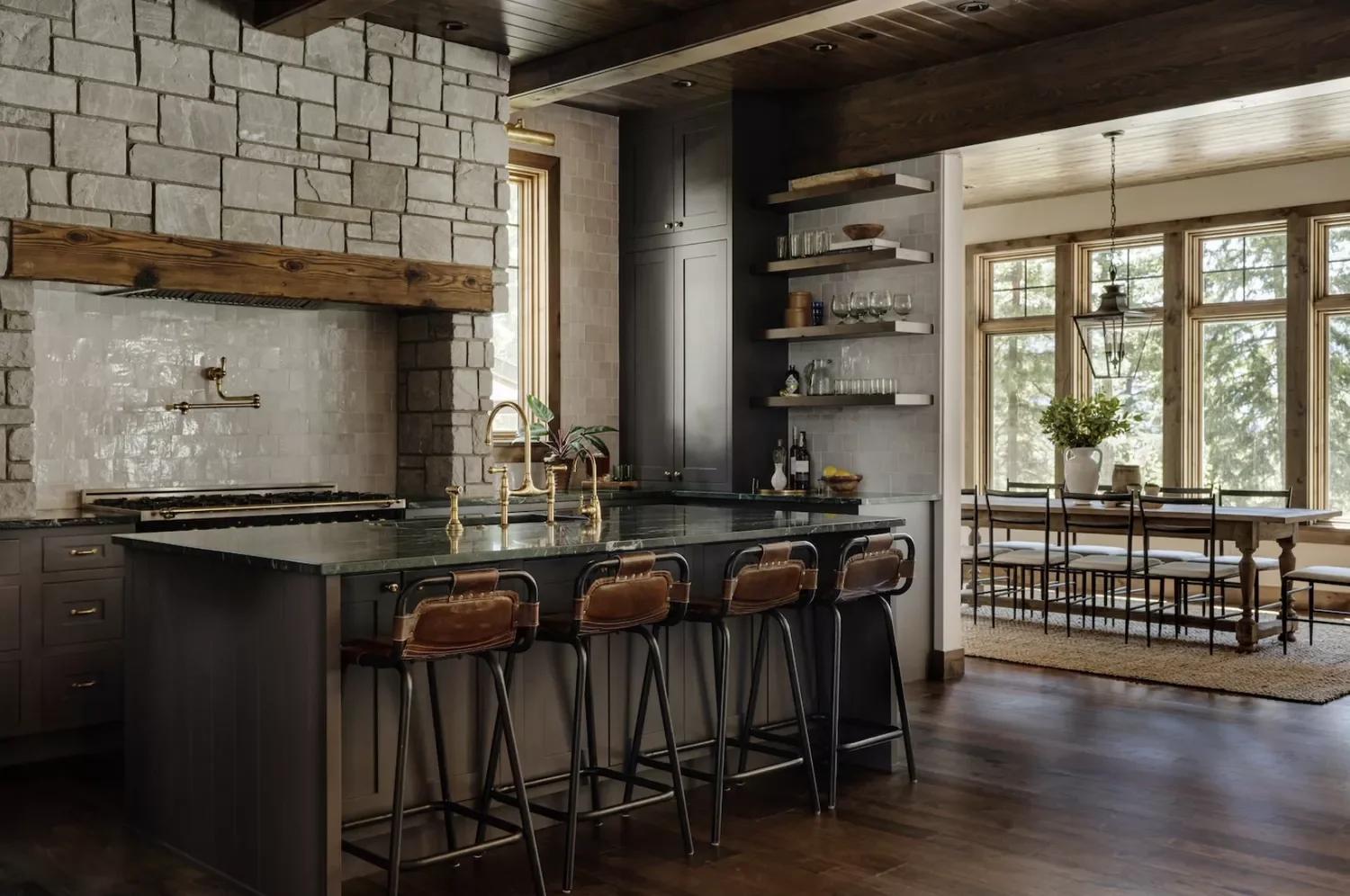
Credit: Jessica Nelson Design
You can define different zones by varying your color tones from light to dark throughout your open space.
Try pairing a moody, dark kitchen with a bright, airy dining area. This contrast creates visual separation while adding depth and dimension to your overall design.
16. Divide Zones With Bookcases
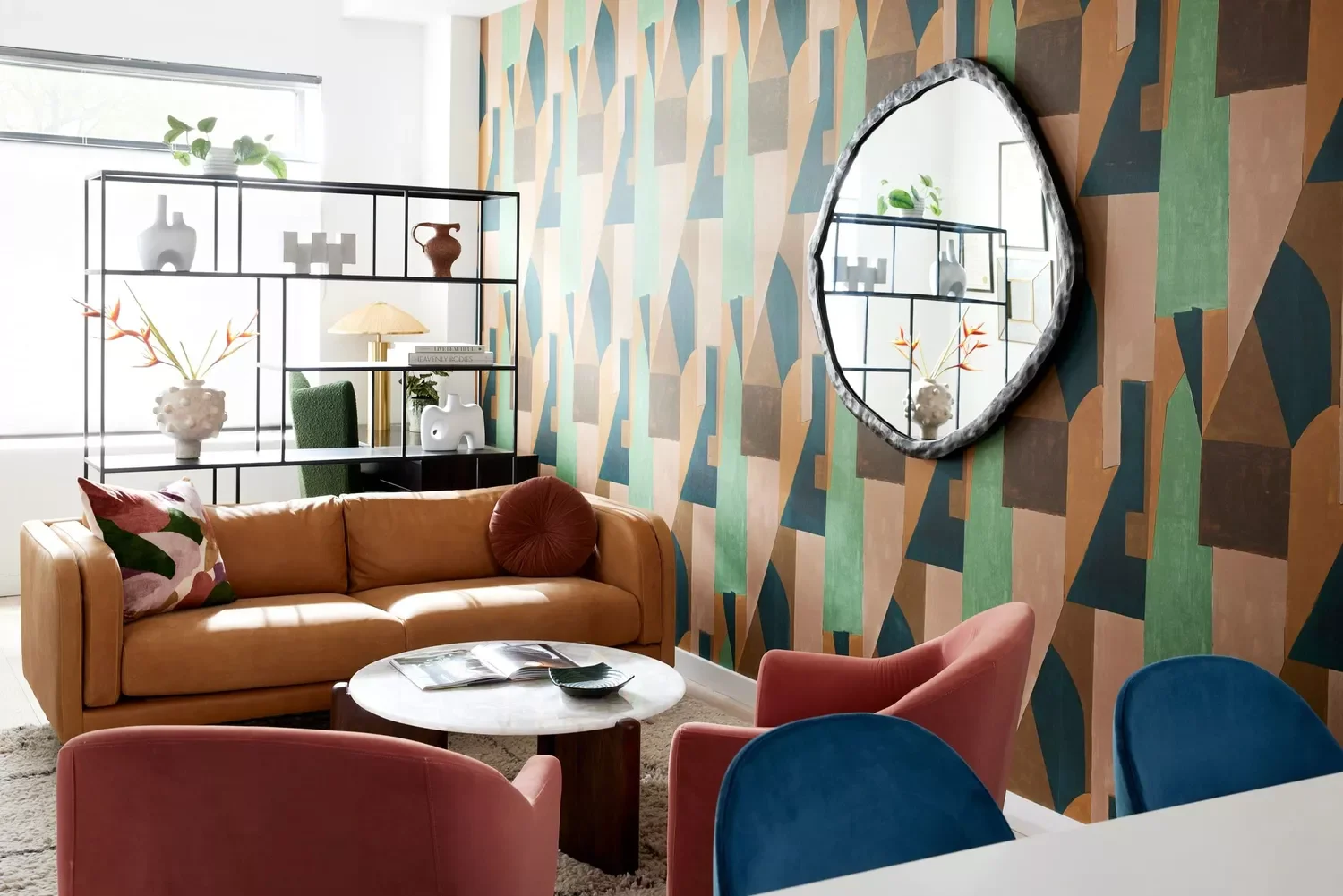
Credit: Alvin Wayne Interiors
A bookcase room divider creates separation while maintaining an open feeling between your living areas.
Style the shelves with sculptural objects and books to add visual interest. You can even hide a small desk area behind it for a discrete home office zone.
17. Use Wallpaper to Unify Spaces
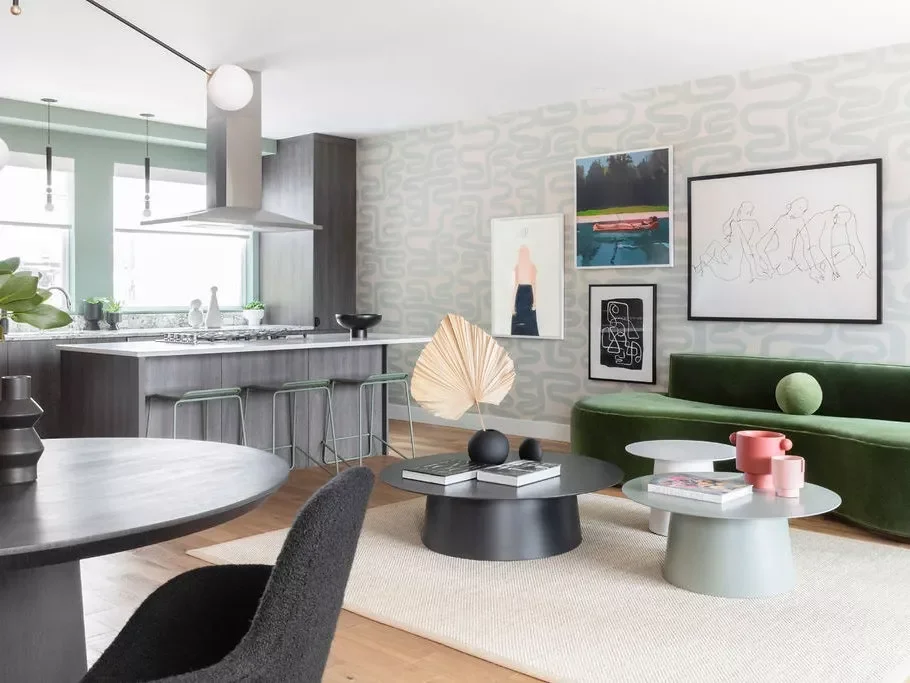
Credit: Michelle Boudreau Design
Patterned wallpaper on your longest wall creates cohesion between different zones in your open floor plan.
Choose colors that appear throughout your space for a harmonious look. This creates a stunning backdrop that ties all your furniture groupings together beautifully.
18. Add Custom Built-In Storage
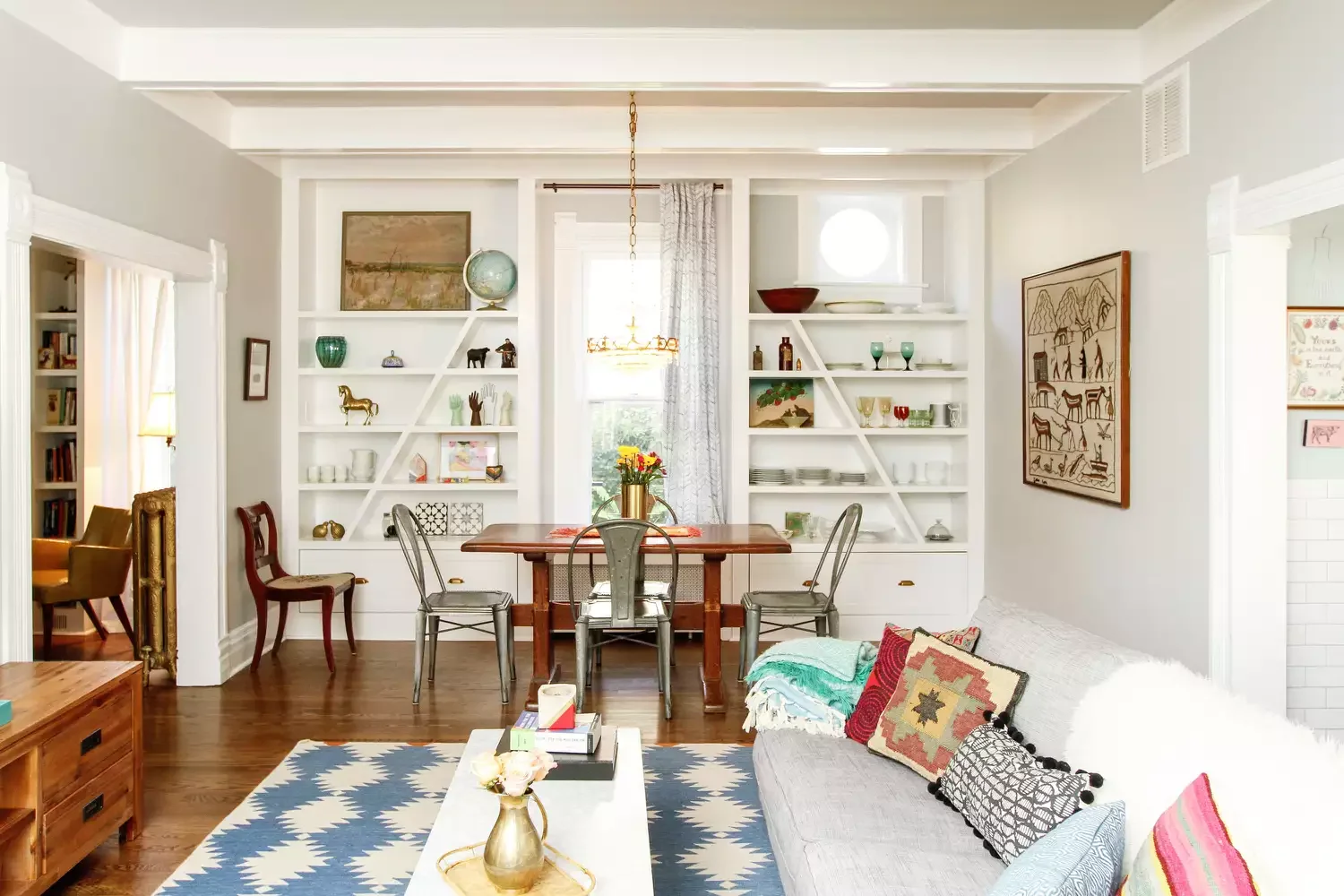
Credit: Ashley Poskin
Built-in shelving creates a stunning focal point while providing essential storage in your open living space.
Consider a TV wall, fireplace surround, or floor-to-ceiling bookcases tailored to your specific layout. These custom solutions make your space feel intentionally designed and uniquely yours.
19. Style a Functional Bar Cart
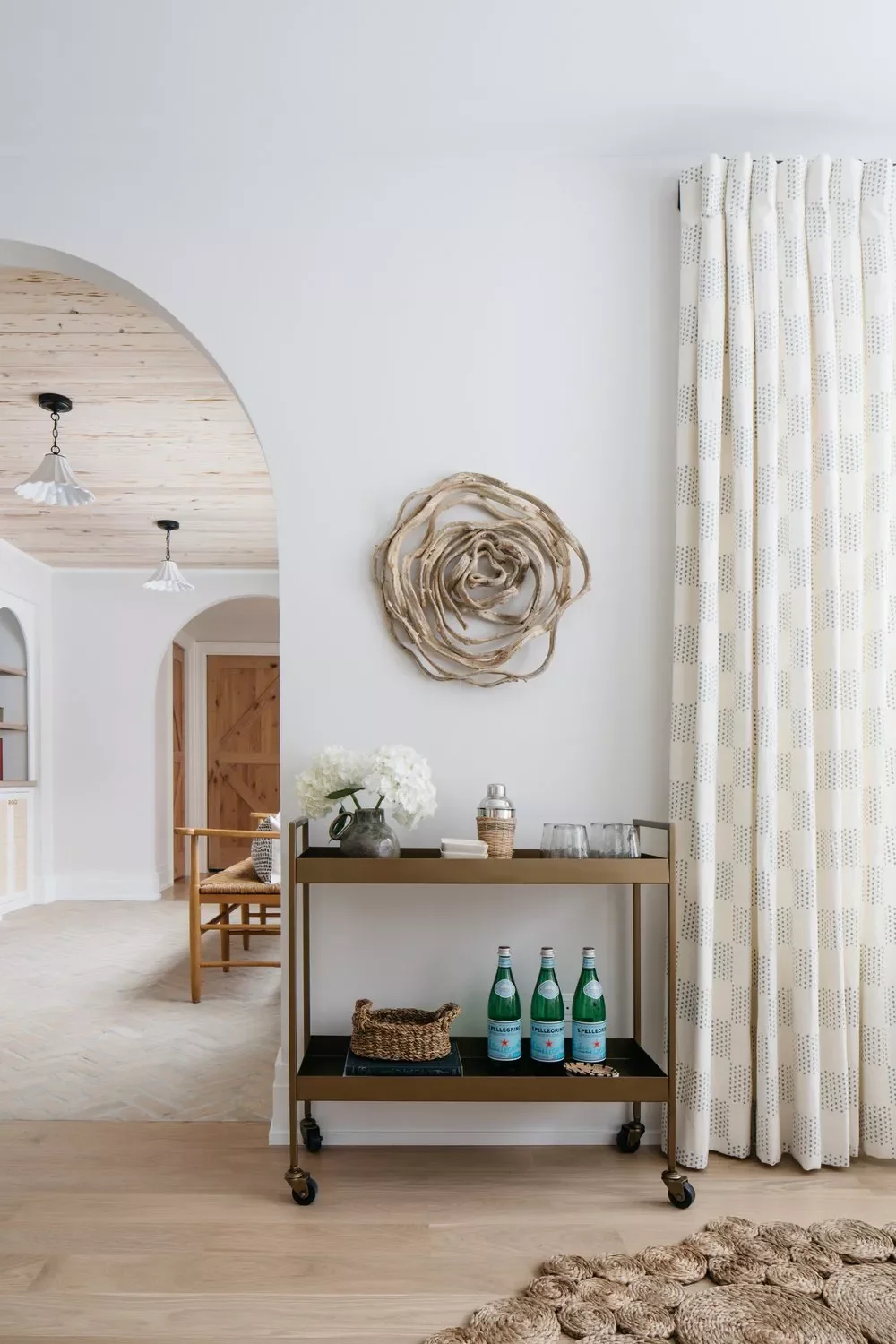
Credit: Kate Marker Interiors
A well-styled bar cart fills empty wall space while adding functionality to your open floor plan.
Use it for cocktail supplies, display plants, or showcase decorative objects. The mobility means you can move it wherever you need extra surface space for entertaining.
20. Define Zones With Area Rugs
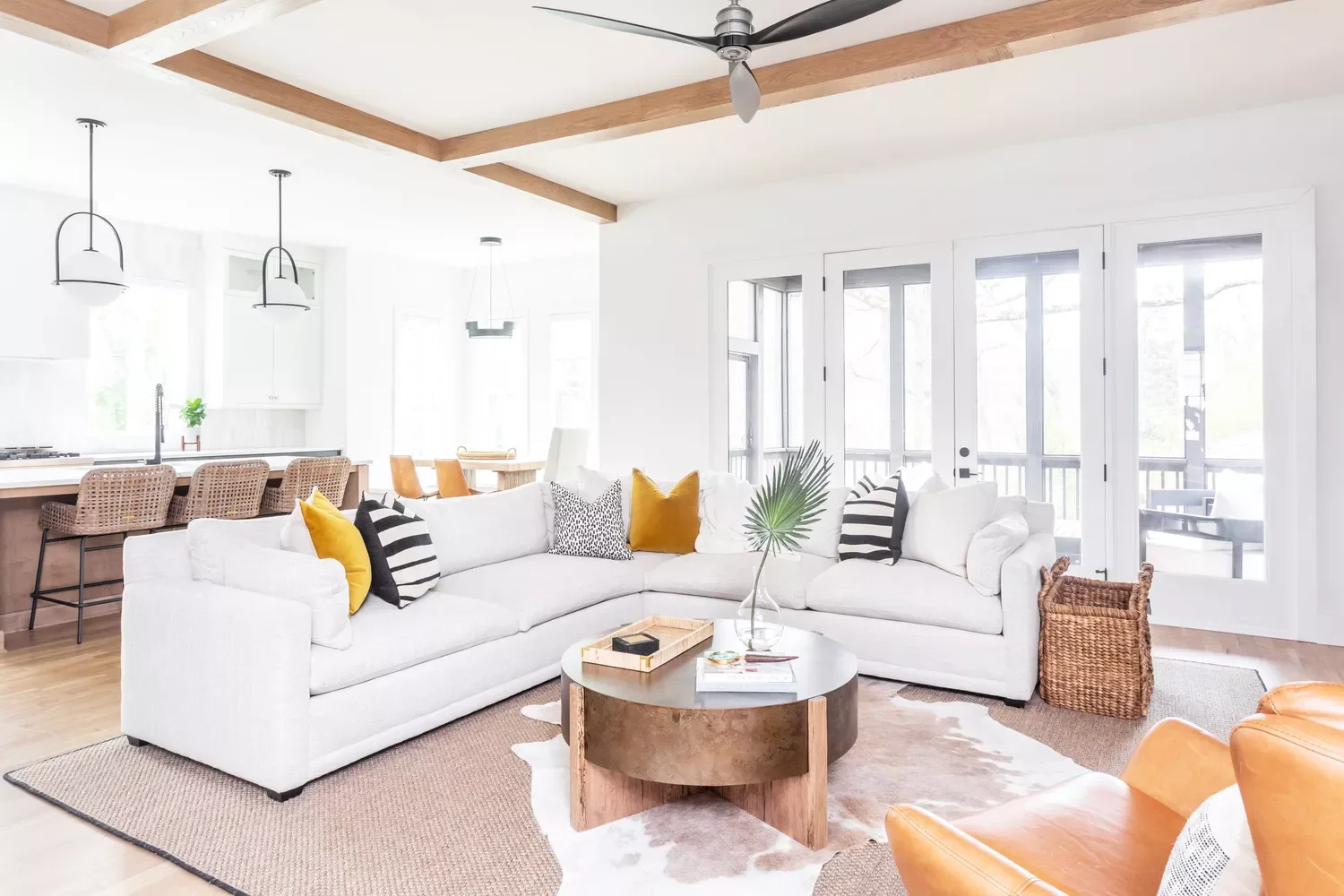
Credit: Morse Design
Area rugs are the easiest way to define individual zones within your open concept space.
Choose large rugs that anchor your seating areas and dining tables completely. This creates visual boundaries while adding warmth, color, and texture to your floors.
21. Warm Up With Leather Accents
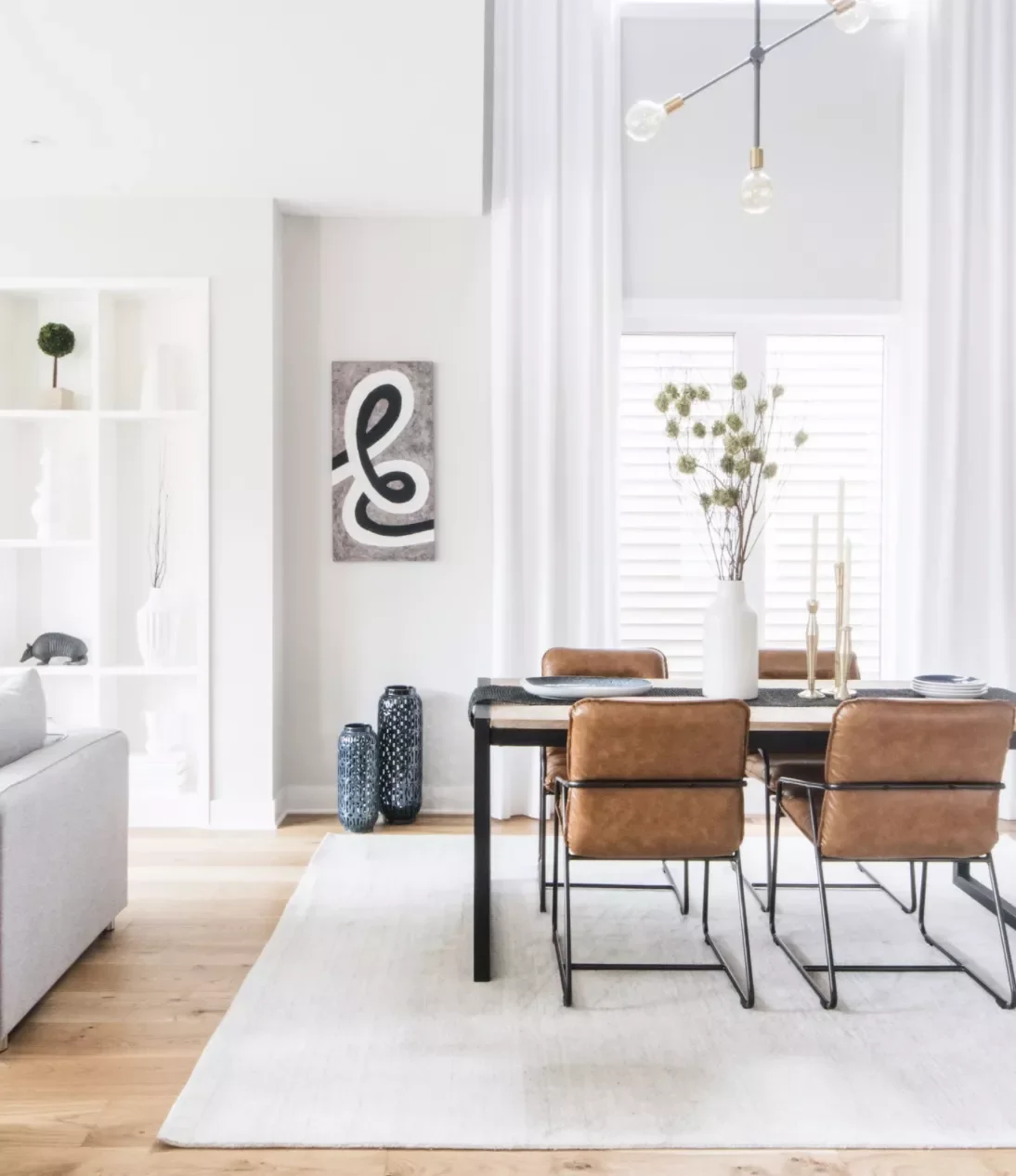
Credit: LeClair Decor
Rich leather dining chairs add warmth and contrast to an all-white open floor plan.
Cognac or caramel leather tones provide beautiful contrast against stark white finishes. This creates visual interest while maintaining the clean, modern aesthetic you love.
22. Integrate Your Home Office
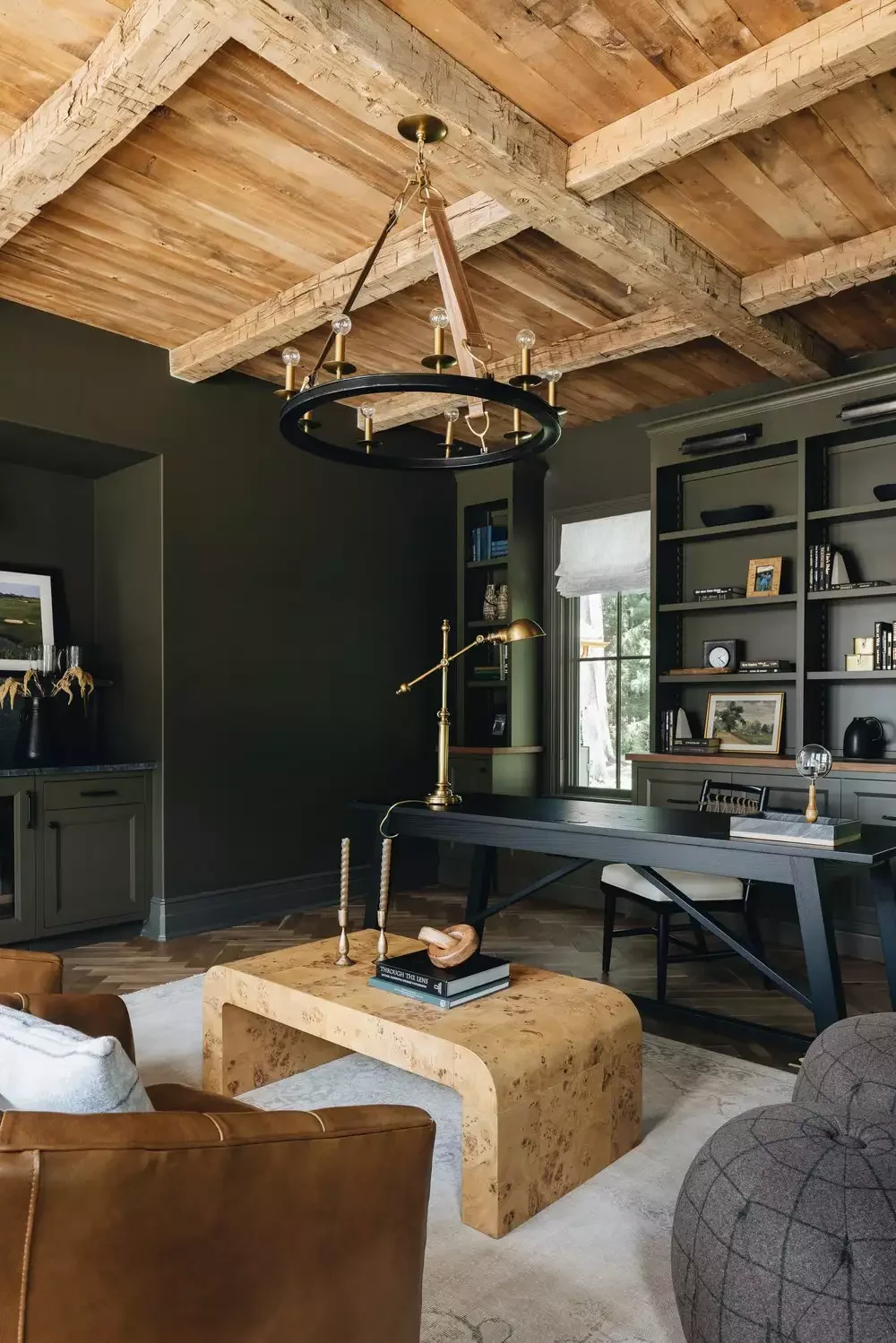
Credit: Kate Marker Interiors
You can seamlessly integrate your workspace into your living room by using complementary colors and finishes.
Position your desk area so it blends into the background when you’re relaxing after work hours. This creates a functional workspace without overwhelming your living space.
23. Float an Entry Table

Credit: Becca Interiors
Create the illusion of a foyer by floating a round table in your entry area on a small decorative rug.
Add a simple arrangement of branches or seasonal flowers for a welcoming touch. This gives guests a focal point and creates definition in your open space.
24. Create Multiple Conversation Areas
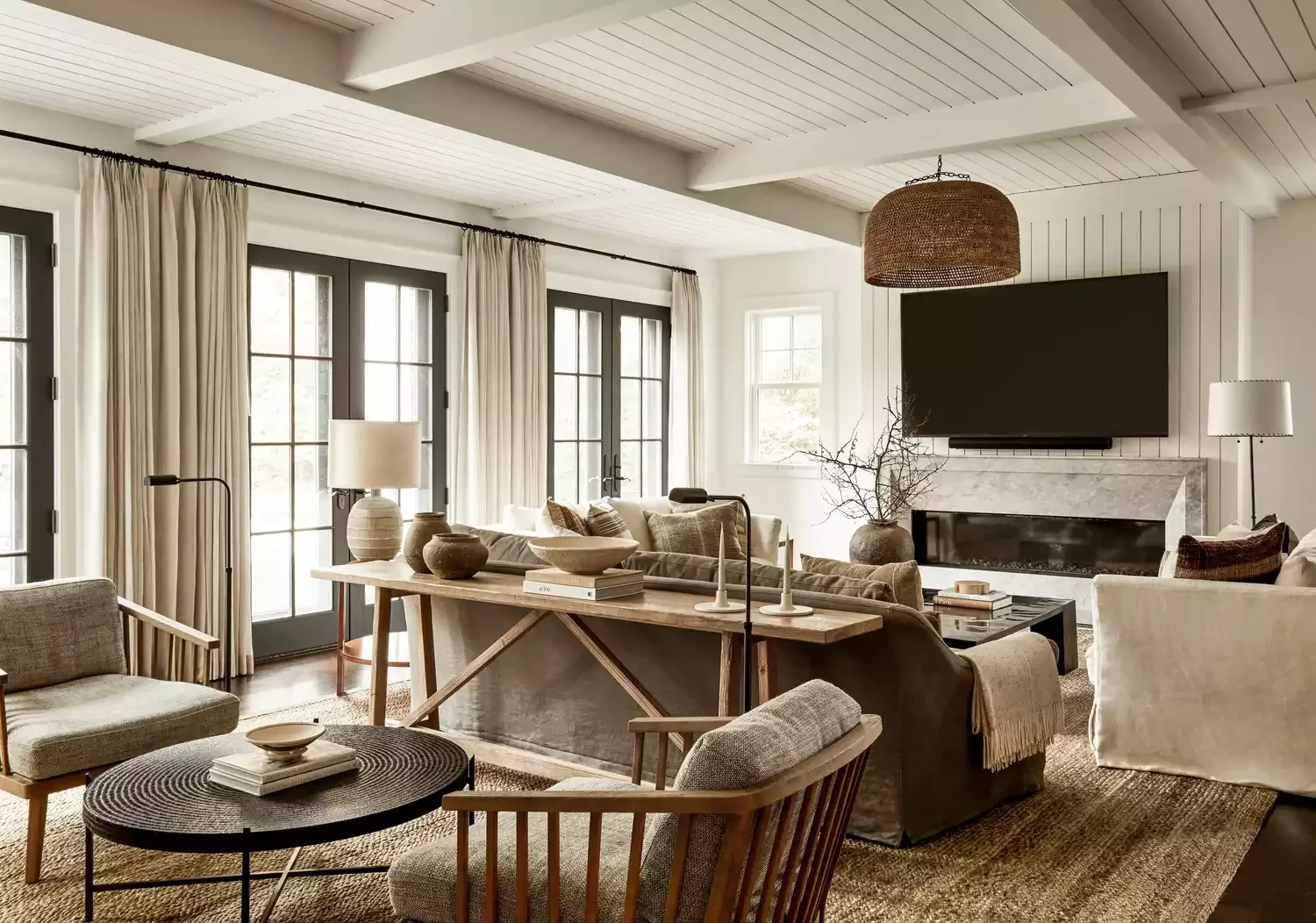
Credit: Becca Interiors
Maximize your open concept space by creating several small seating areas rather than one large furniture grouping.
This allows multiple activities to happen simultaneously and makes your space feel larger and more versatile. Each area can serve different functions throughout the day.
25. Stick to a Cohesive Color Palette
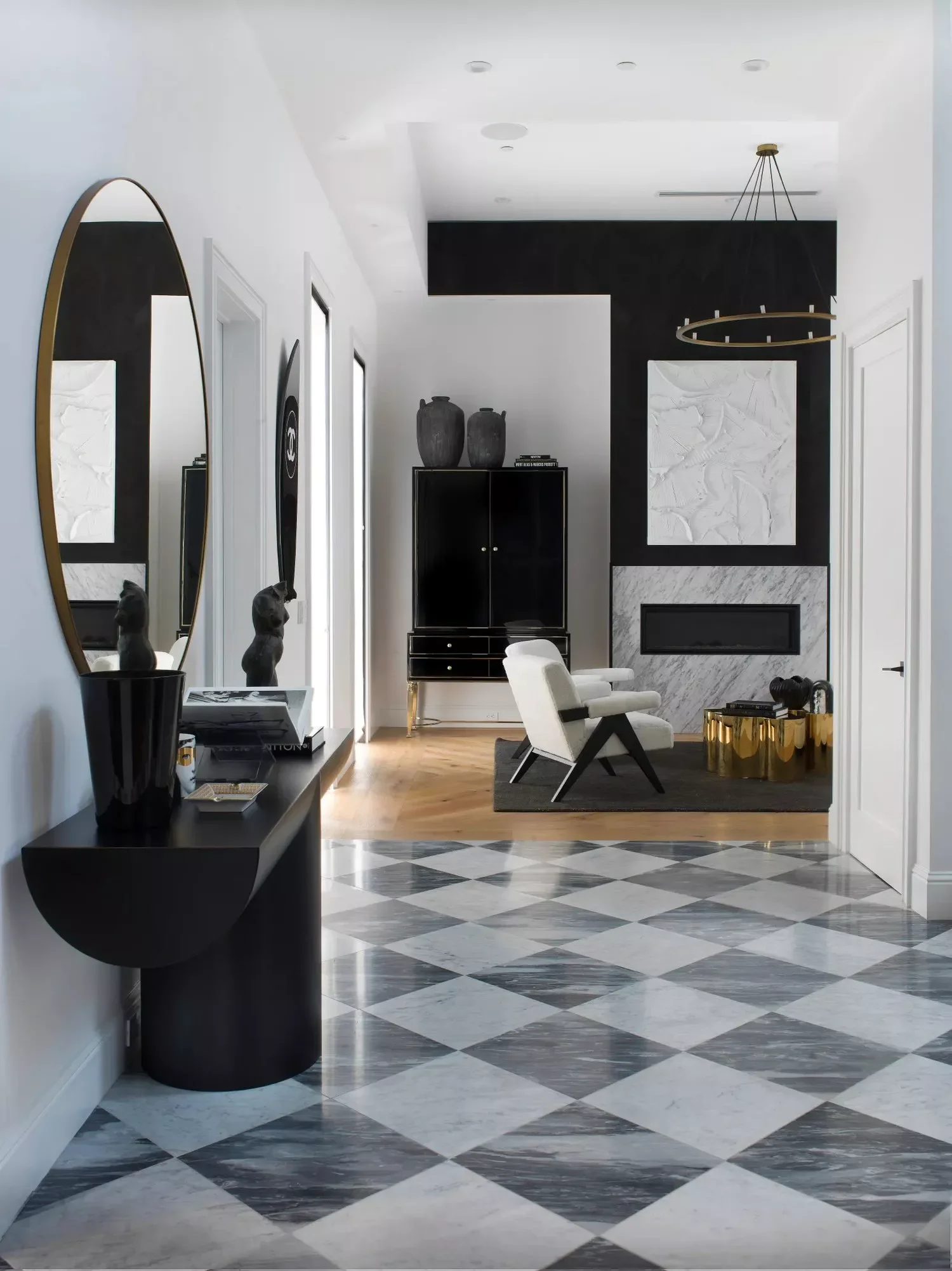
Credit: Studio KT
A consistent color palette throughout your open floor plan creates visual harmony and makes everything feel intentionally designed.
Classic combinations like black, white, and gray work with any style and provide a timeless backdrop for your furniture and accessories.
26. Use Lighting to Define Areas
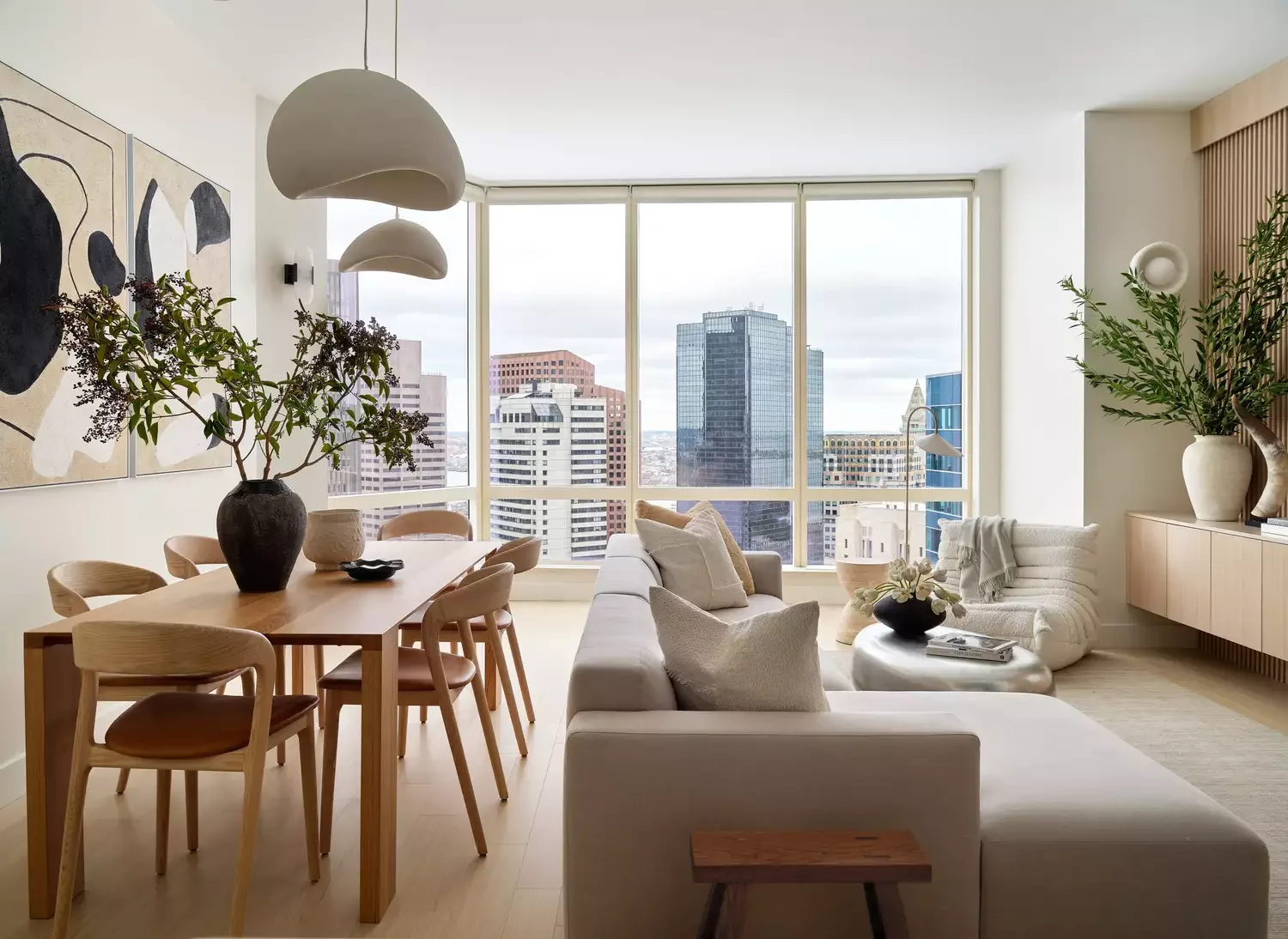
Credit: Desiree Burns Interiors
Strategic lighting placement can define your dining area within a larger open living space beautifully.
Hang pendant lights over your dining table to create an intimate zone. Choose fixtures that complement your overall style while providing focused task lighting for meals.
27. Balance Seating Throughout
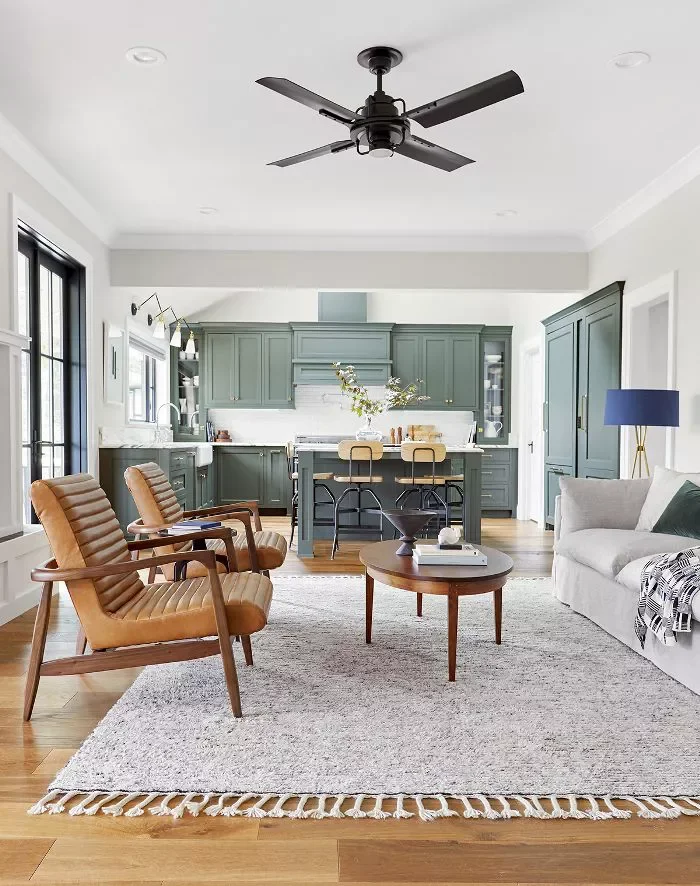
Credit: Emily Henderson Designs / Photo by Sara Ligorria-Tramp
In your open kitchen and living room, pair a sofa along one wall with accent chairs across from it.
This arrangement provides plenty of seating without crowding your space. It also creates natural conversation areas while maintaining good traffic flow throughout your home.
28. Unite Multi-Level Spaces
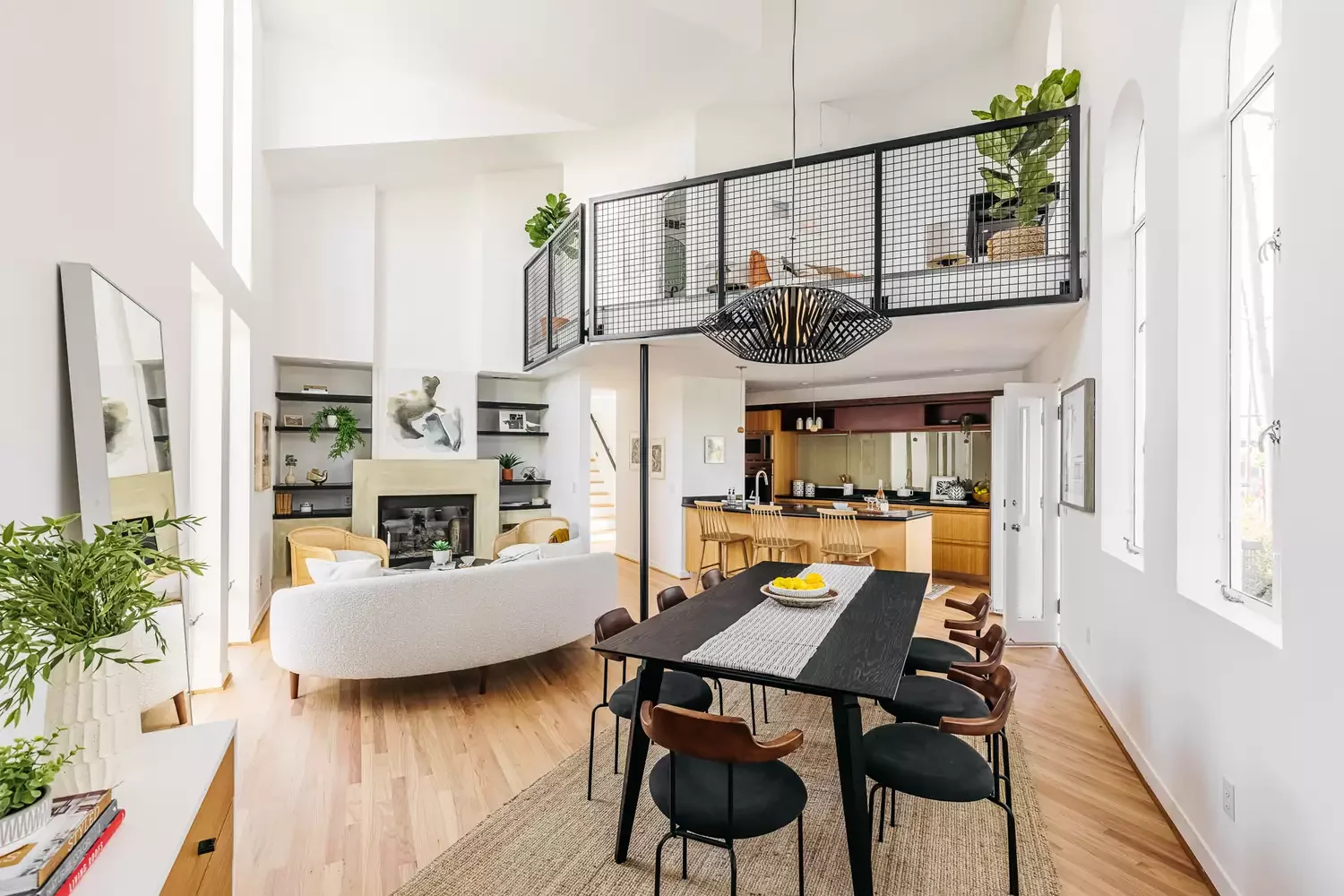
Credit: Christopher Lee Foto
In double-height open spaces, use consistent accent colors to connect different levels visually.
Carry black accents from your mezzanine railings down to your dining furniture and living room shelving. This creates cohesion between your upper and lower levels beautifully.
29. Use Color to Separate Functions
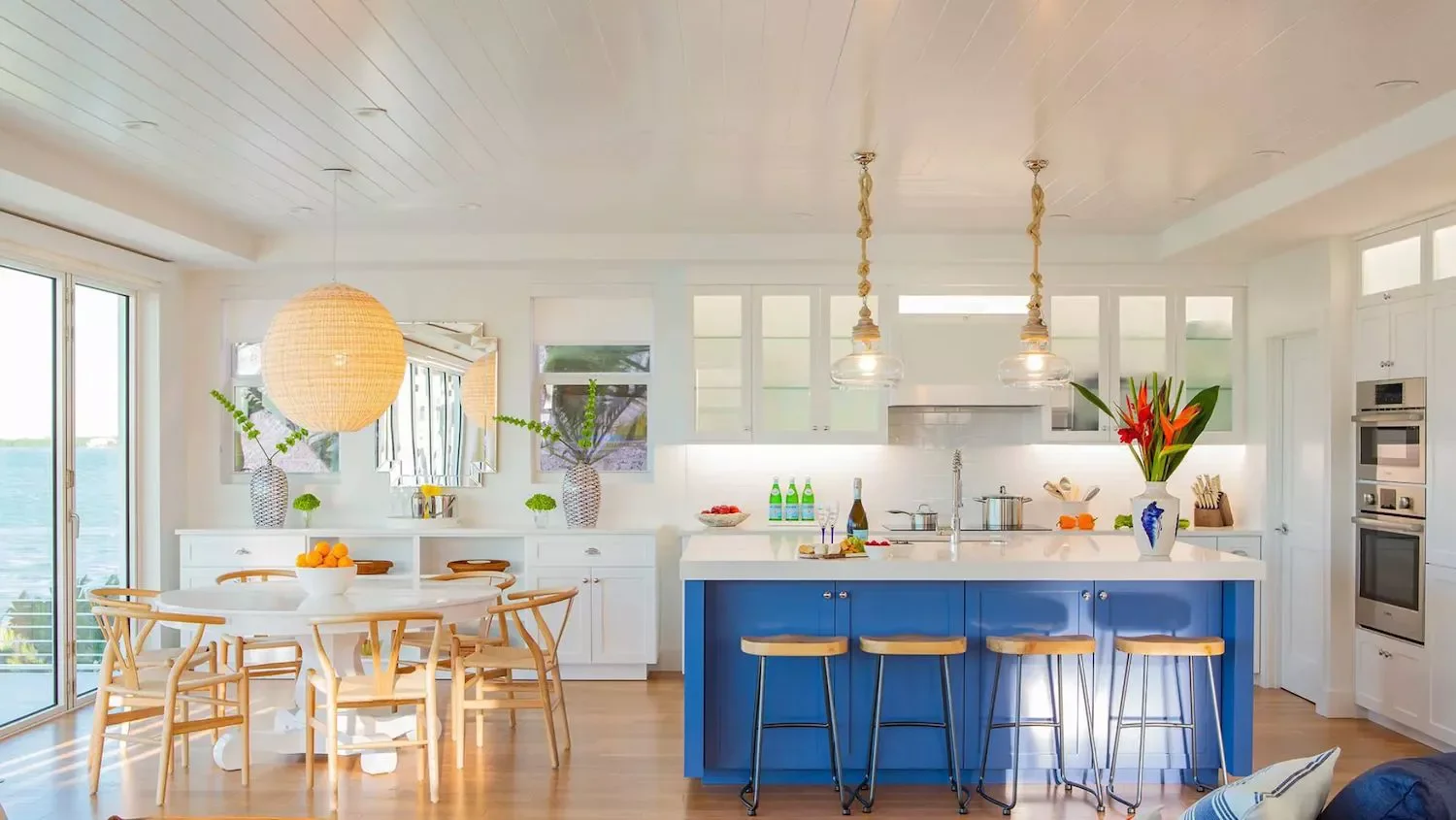
Credit: Maite Granda
A brightly colored kitchen island creates natural separation between your cooking and dining areas.
Choose a bold hue that stands out from your dining table zone while complementing your overall color scheme. This defines each area’s function while adding personality to your space.
30. Maintain Clear Sightlines

Credit: Twelve 15 Design Studio
When your kitchen and living room are divided by a peninsula, keep decorative items to a minimum on the counter.
This maintains clear sightlines between spaces and prevents your home from feeling cluttered. Clean surfaces also make your open floor plan feel more spacious and organized.
31. Coordinate Lighting Fixtures
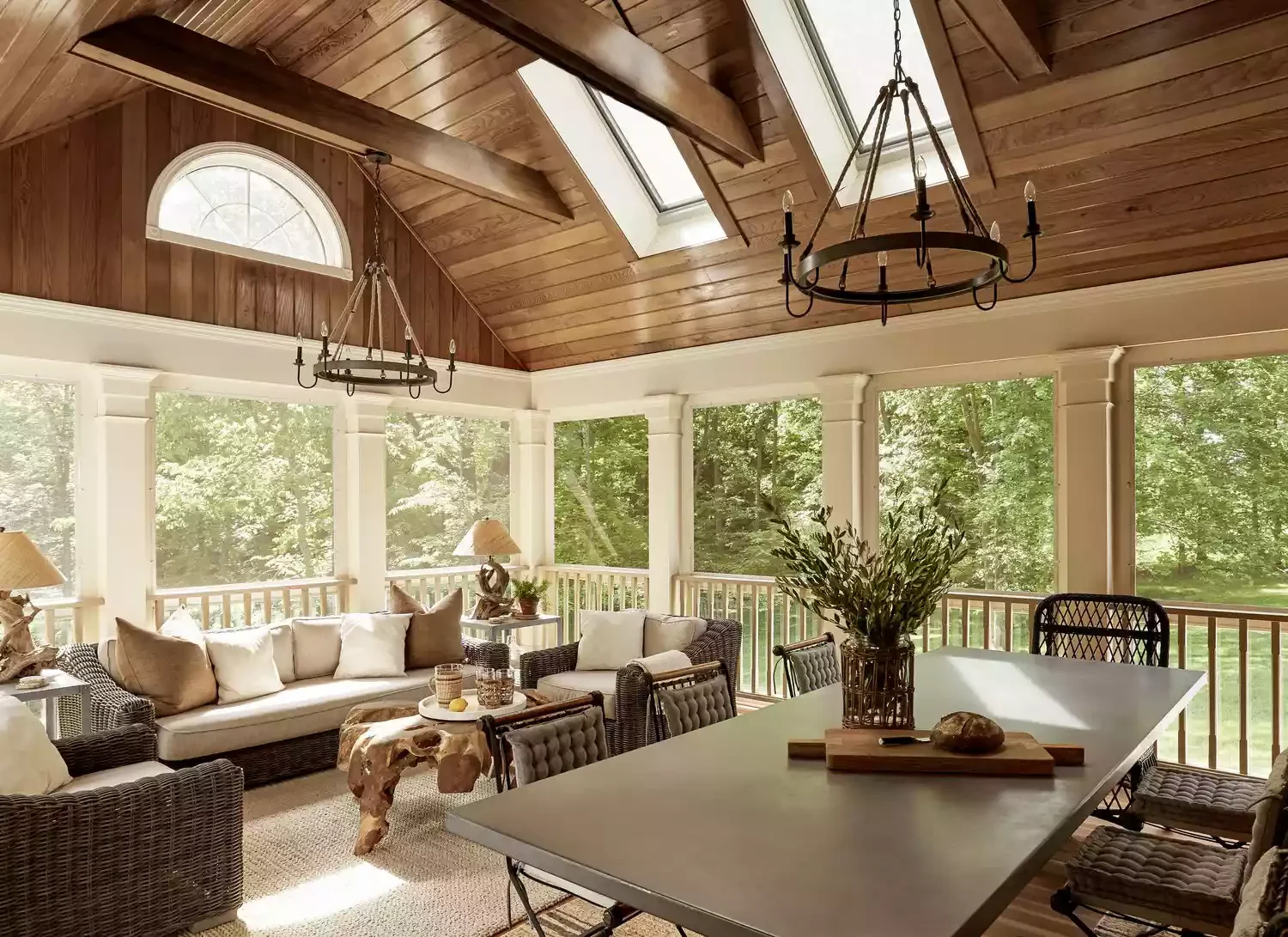
Credit: Becca Interiors
Use matching or coordinating light fixtures to create unity across your large multi-functional space.
The same style chandeliers or pendants throughout your open floor plan create visual rhythm. This approach works especially well in indoor-outdoor spaces like screened porches.
32. Ground Seating With Side Tables
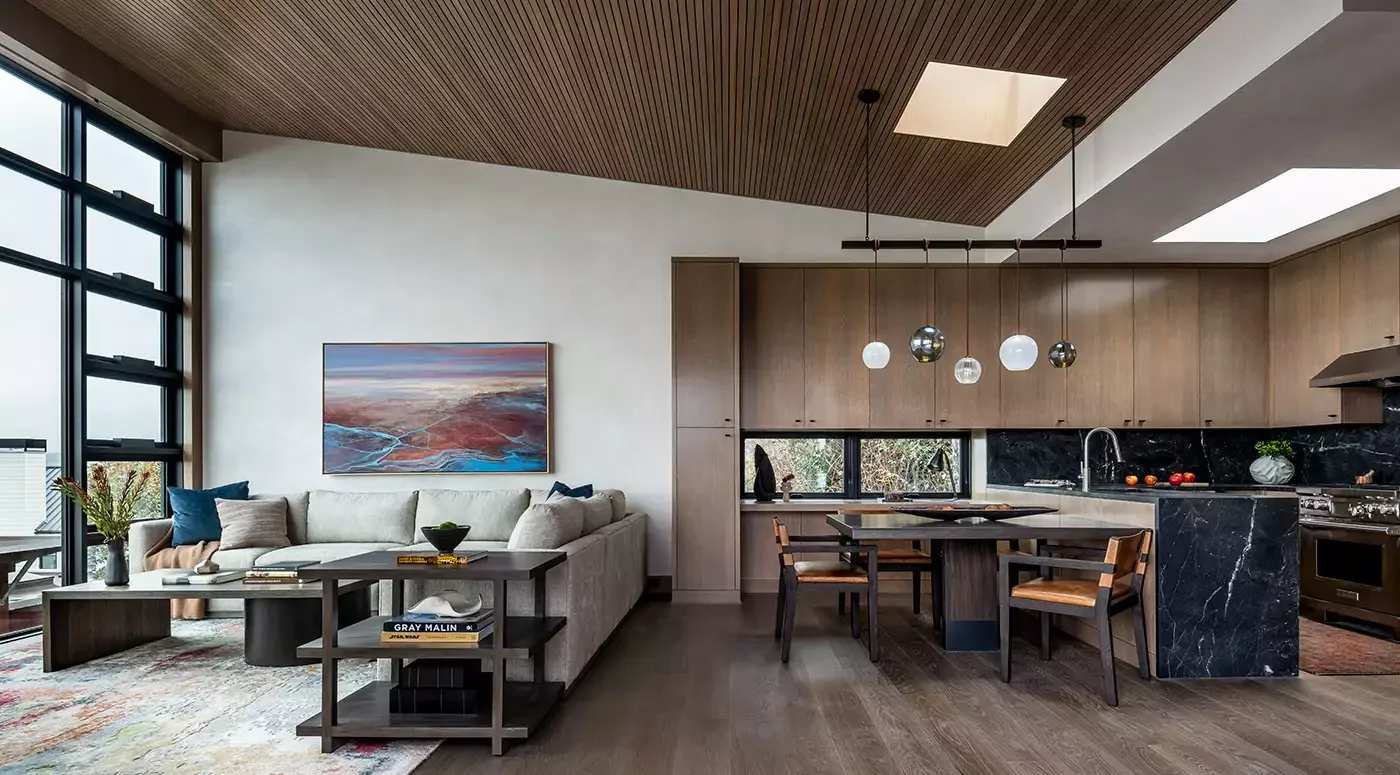
Credit: LeeAnn Baker Interiors
Side tables anchor your seating areas while providing practical surfaces for drinks and lighting.
They create natural divisions within your open space without blocking sightlines. Choose tables that complement your sofa height and style for the most cohesive look.
33. Add Storage Without Walls
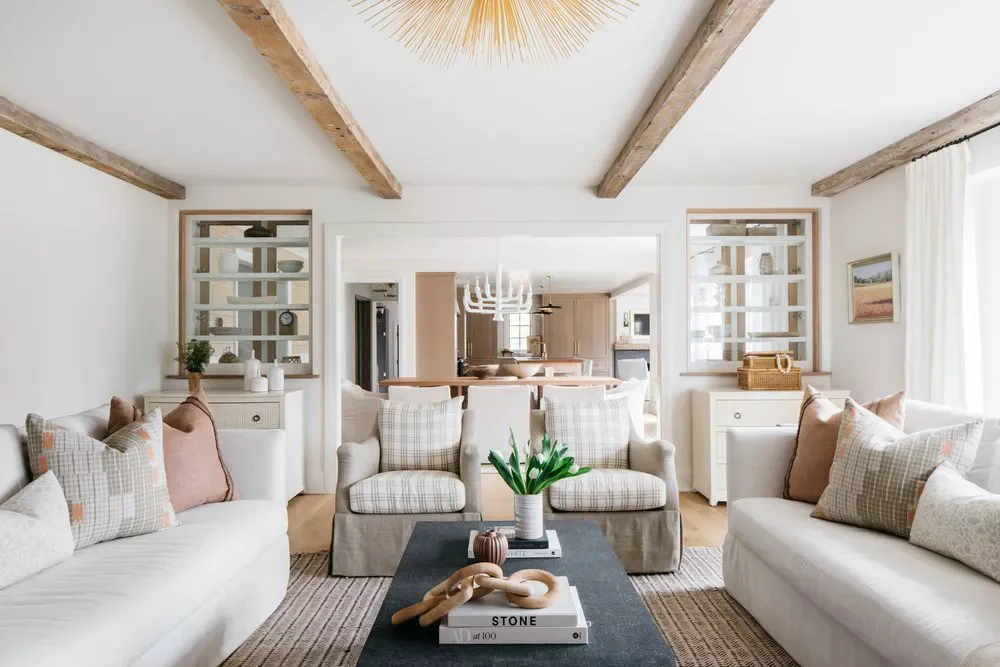
Credit: Kate Marker Interiors
Built-in open shelving creates separation between your living and dining areas while maintaining an airy feeling.
This solution provides essential storage and display space without the heaviness of solid walls. Style the shelves thoughtfully to enhance your overall decor scheme.
34. Coordinate Ceiling Treatments
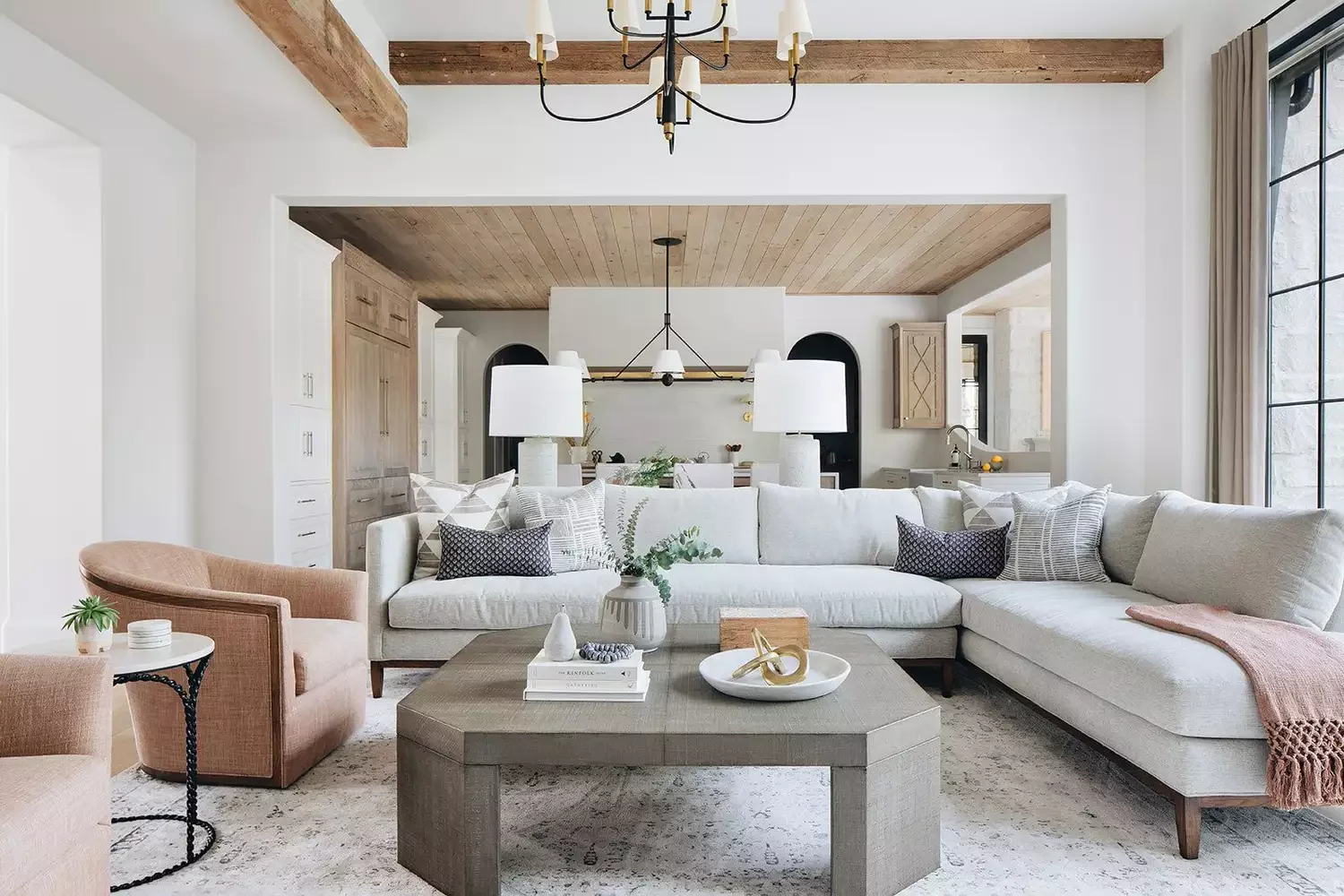
Credit: Kate Marker Interiors
Unite your spacious open floor plan by using similar ceiling finishes throughout different zones.
Try wooden planks in your kitchen area with coordinating ceiling beams in your living space. This creates visual continuity overhead while defining each area’s character.
35. Experiment With Furniture Arrangements
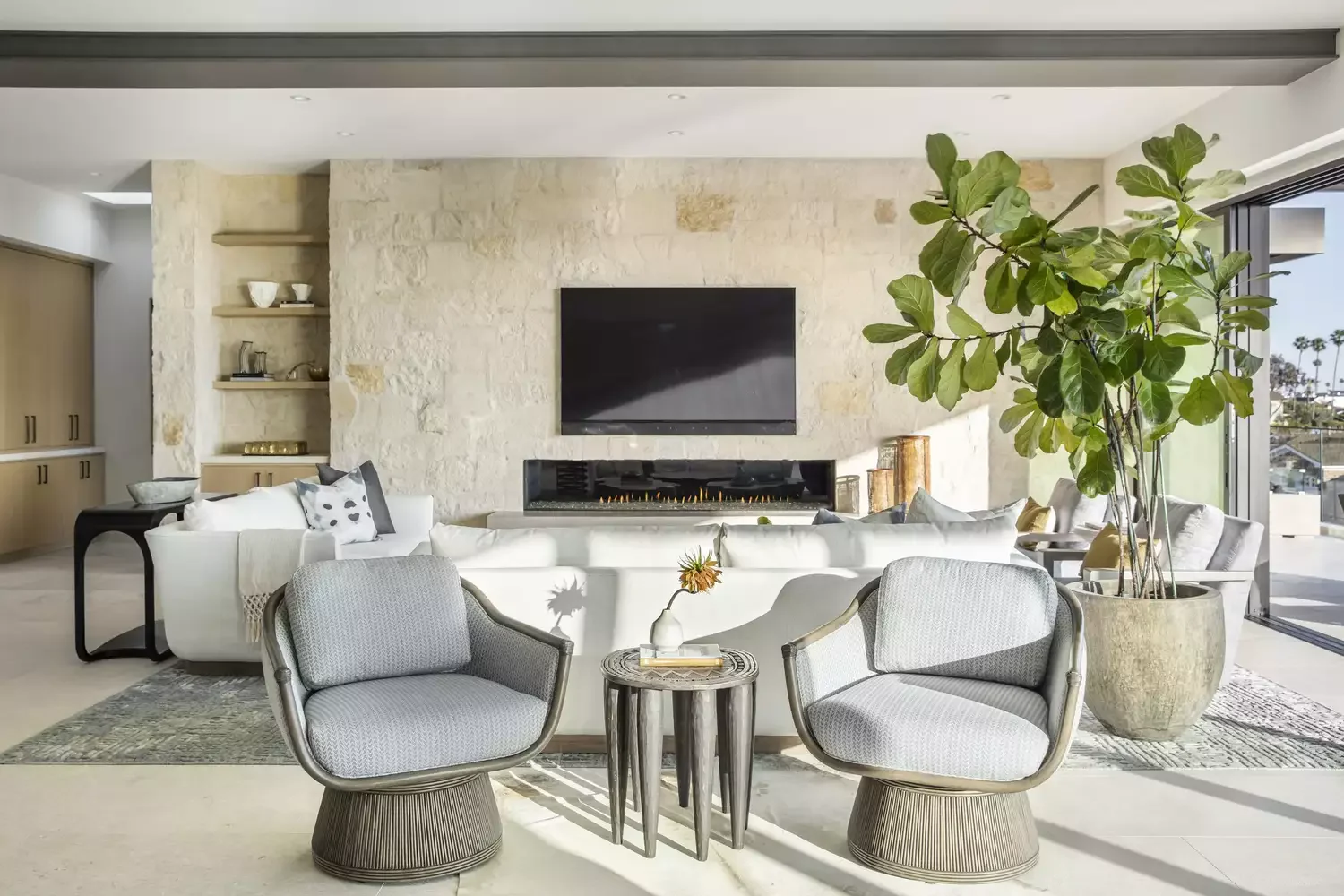
Credit: Brophy Interiors
Create distinct spaces by positioning your large sofa with its back to the main room for a cozy feeling.
Then arrange a smaller seating area behind it facing the opposite direction. This clever layout creates two separate conversation zones within your open living space.
Final Thoughts
Your open floor plan doesn’t have to feel overwhelming or undefined with these designer-approved strategies.
The key is creating zones that flow together while serving your family’s specific needs and lifestyle.
Start with one or two ideas that speak to you, then gradually layer in additional elements until your space feels perfectly balanced and uniquely yours.